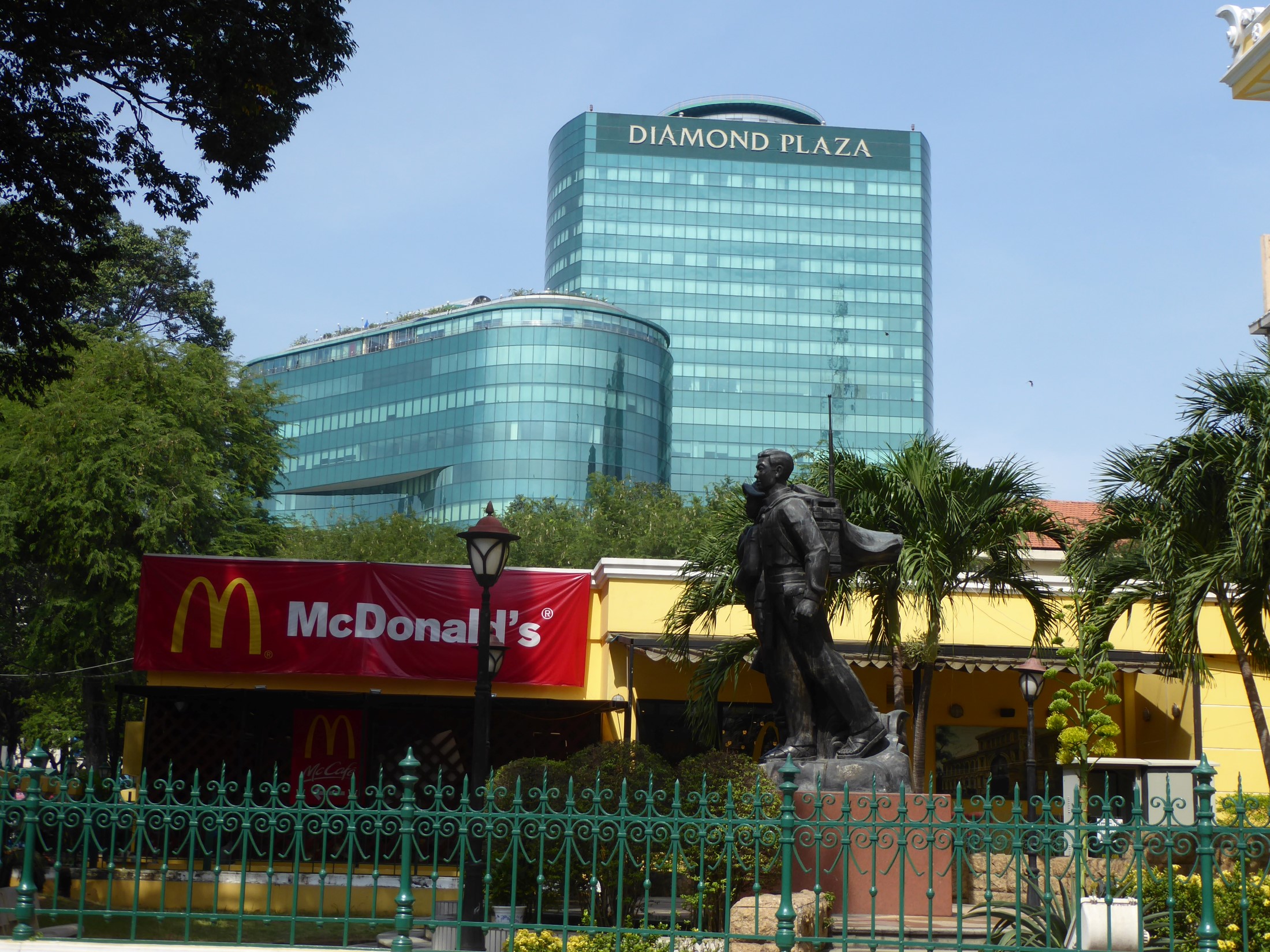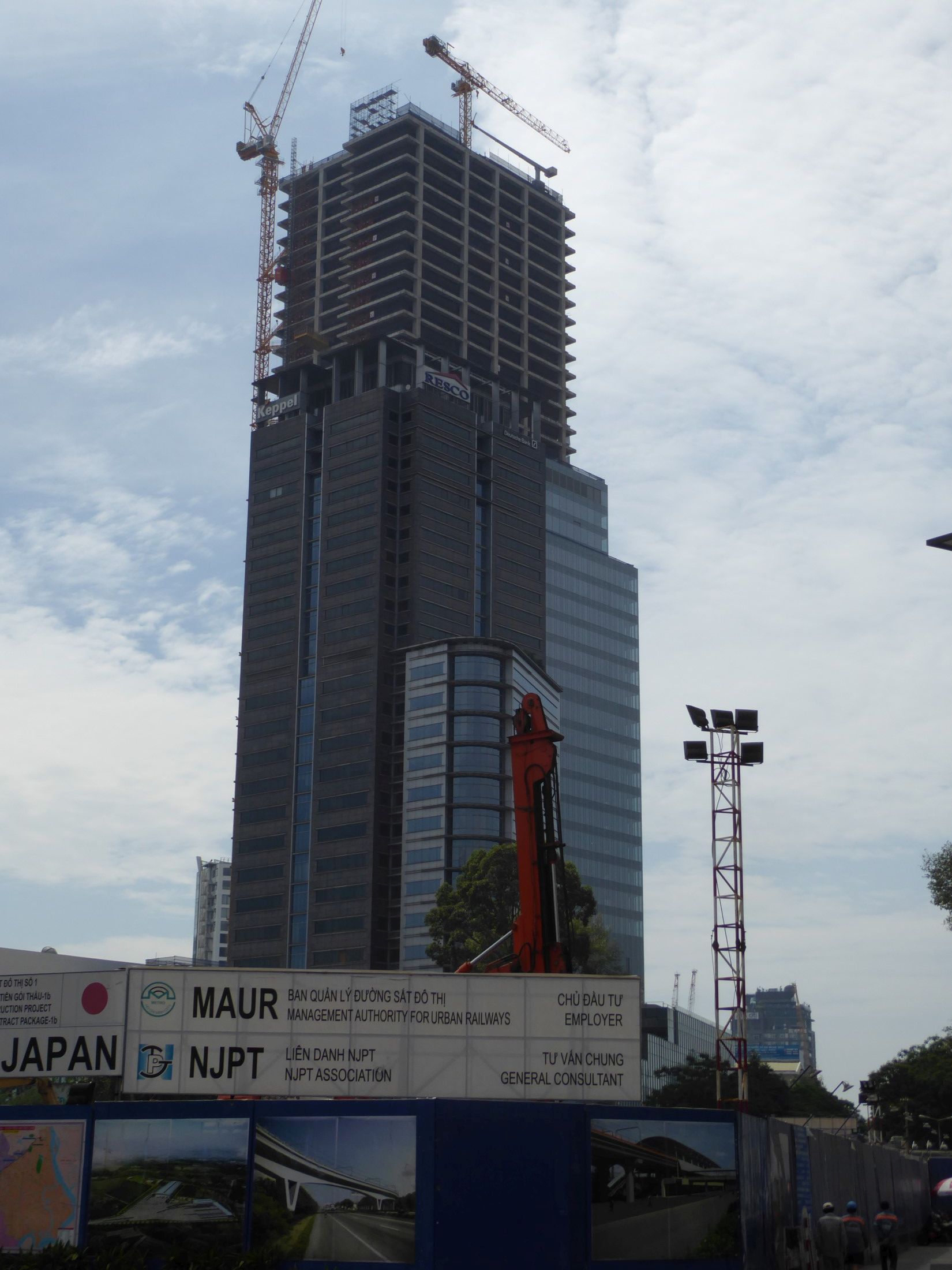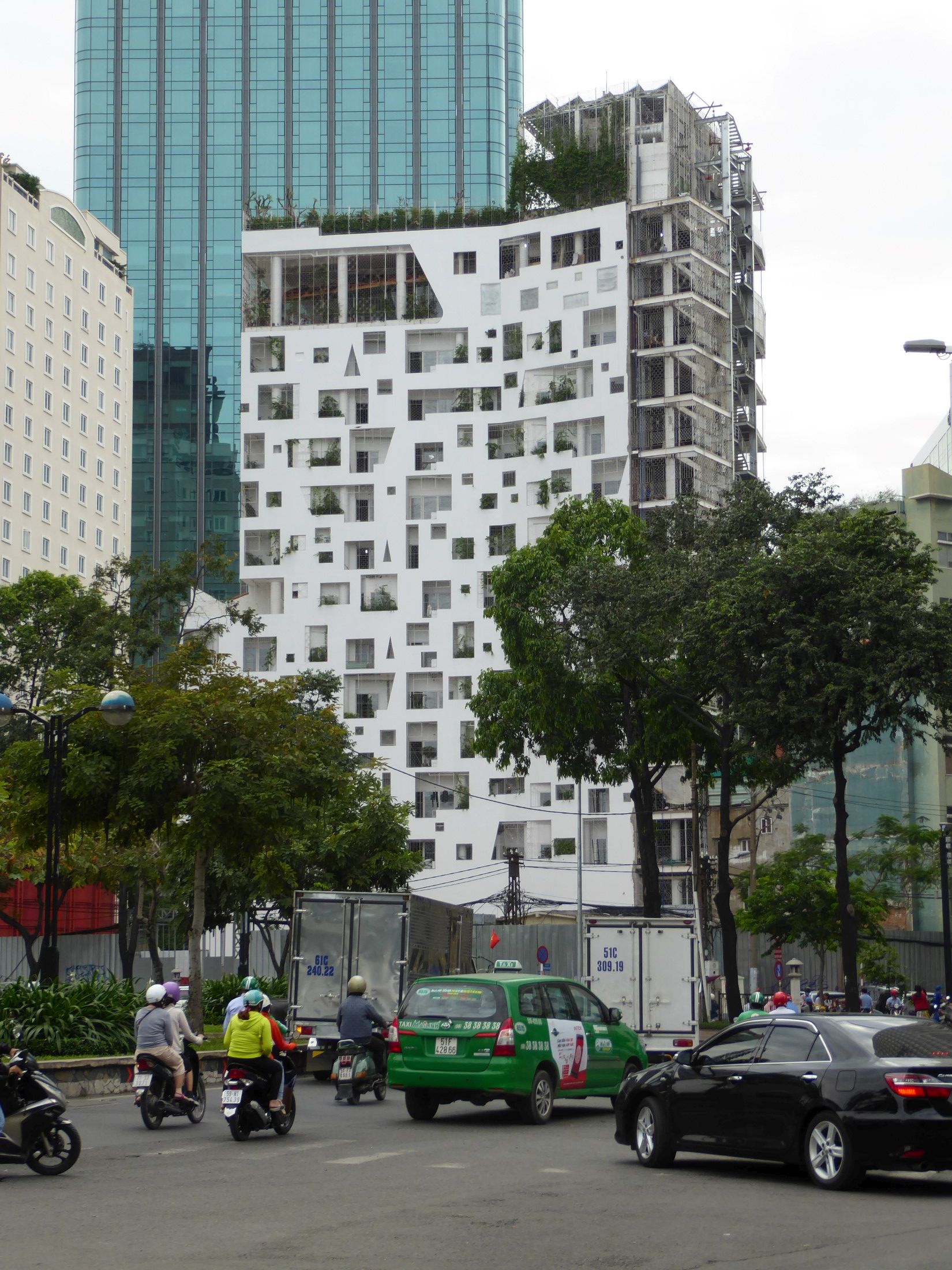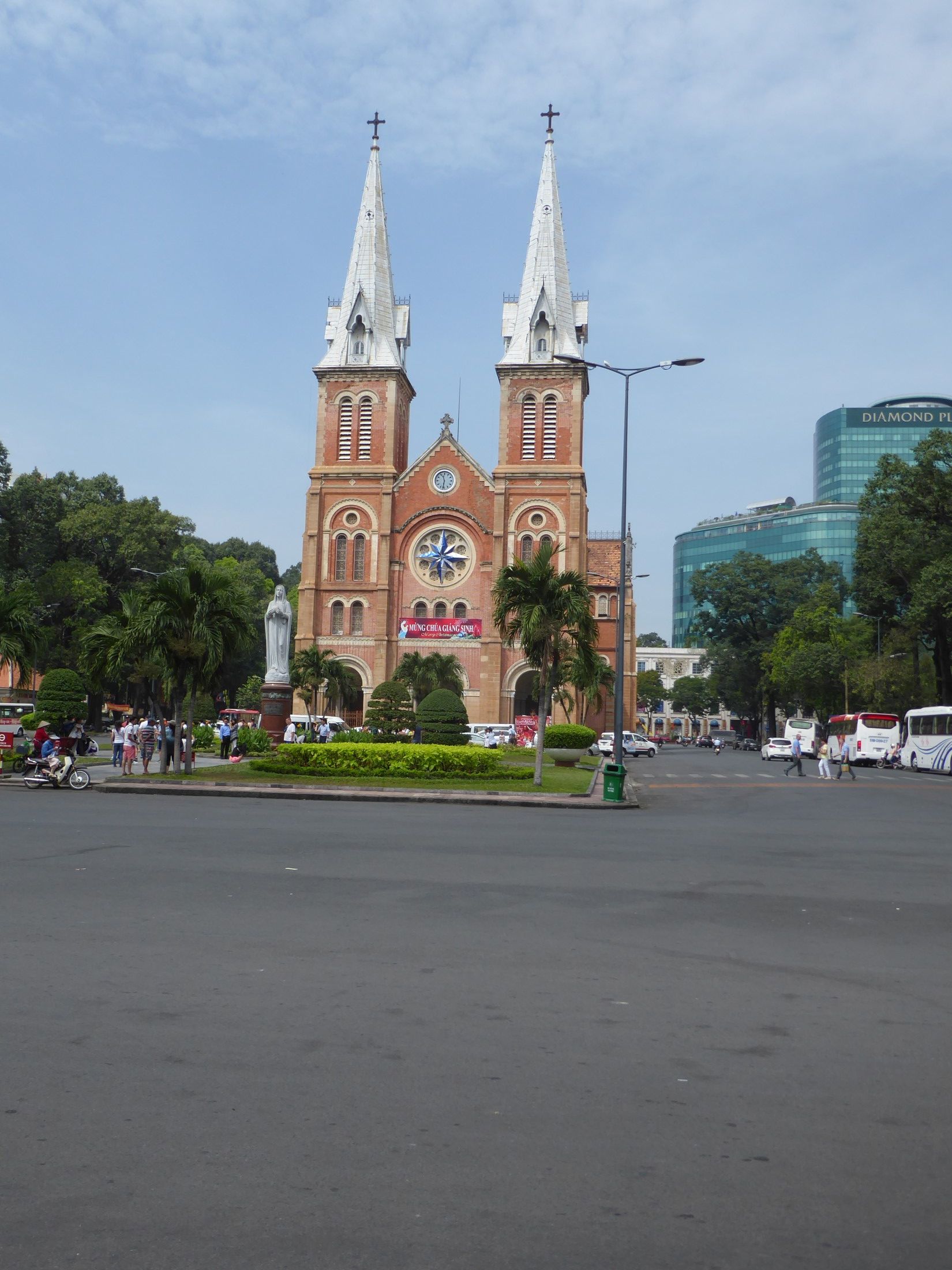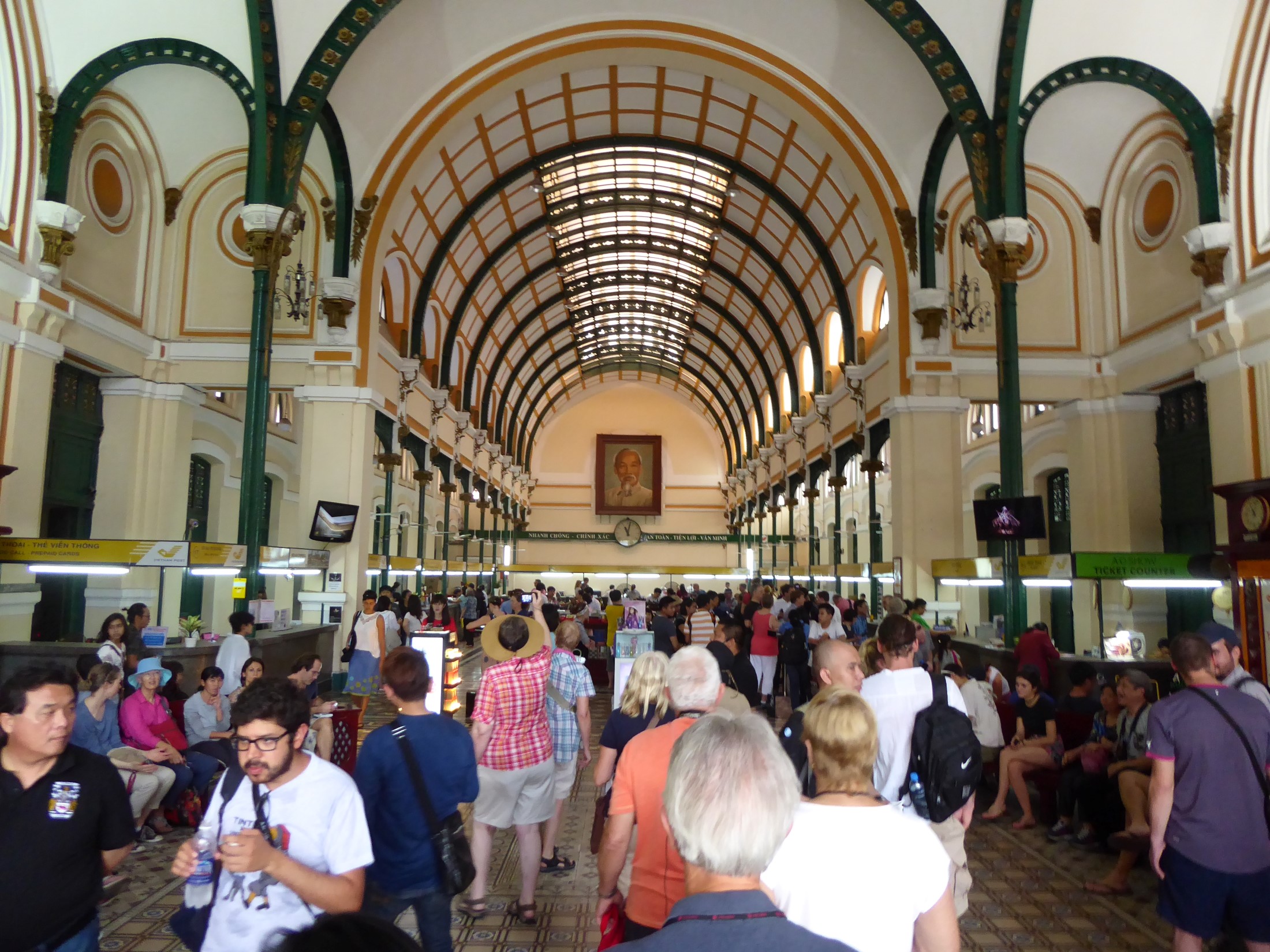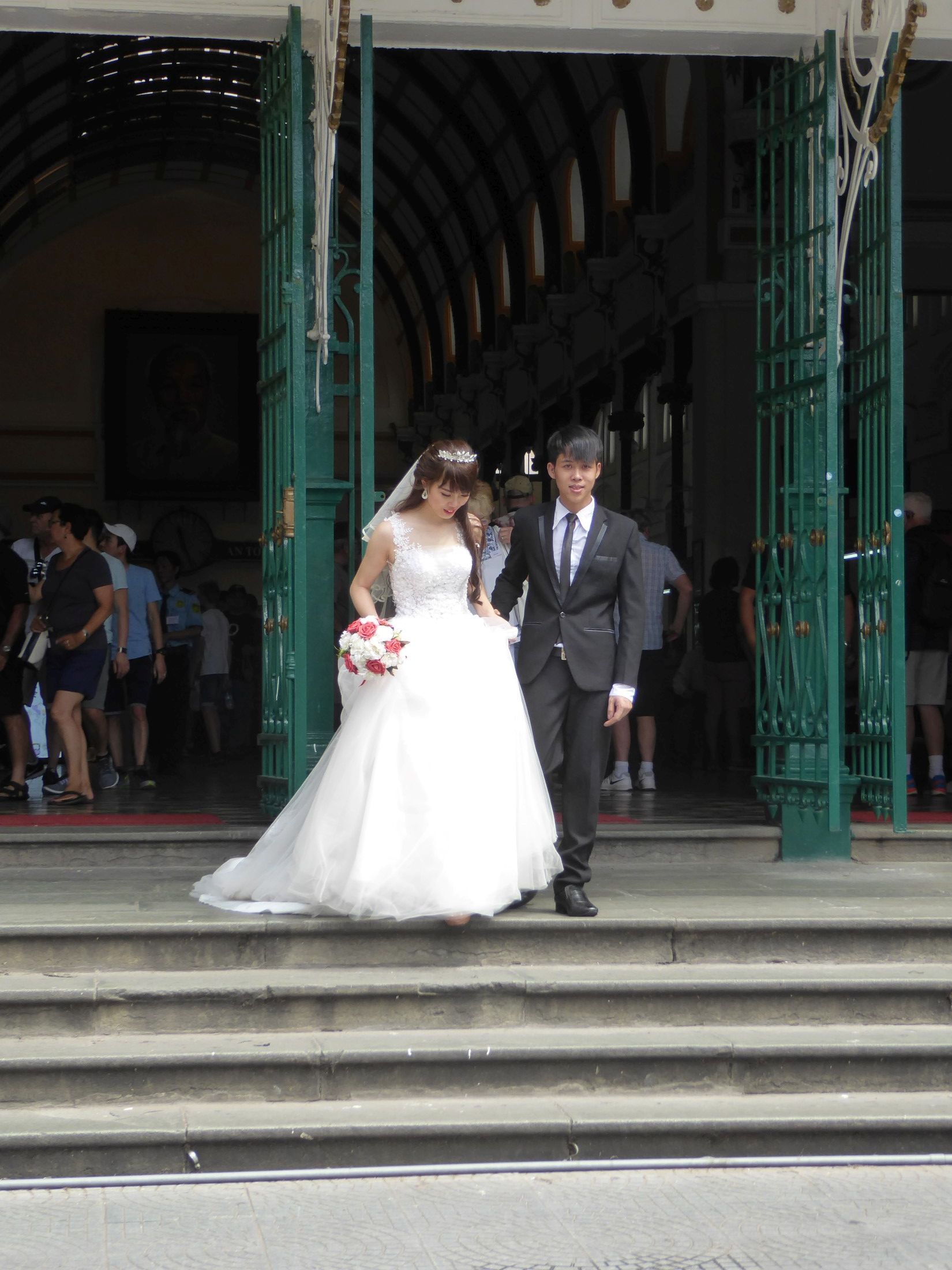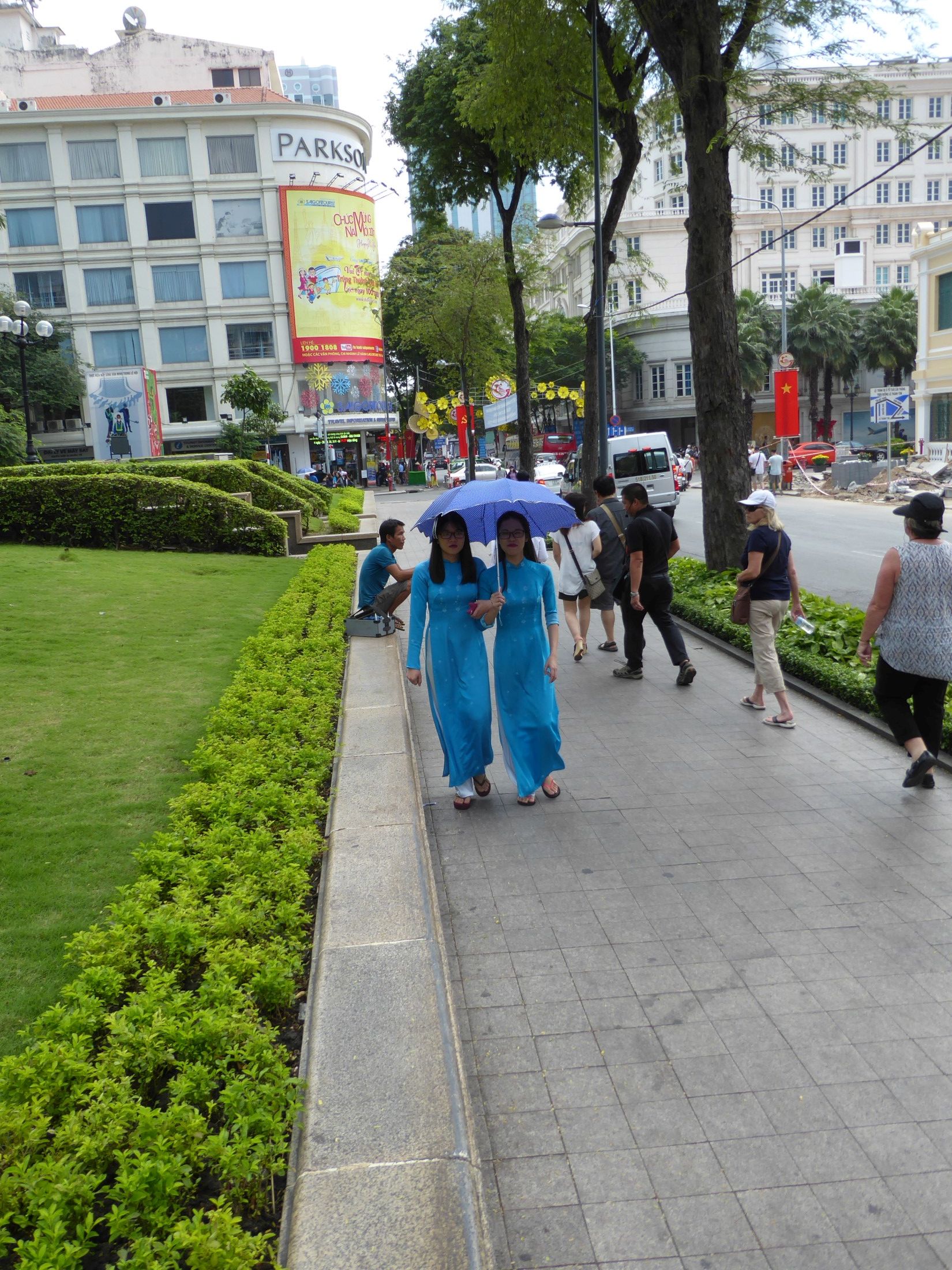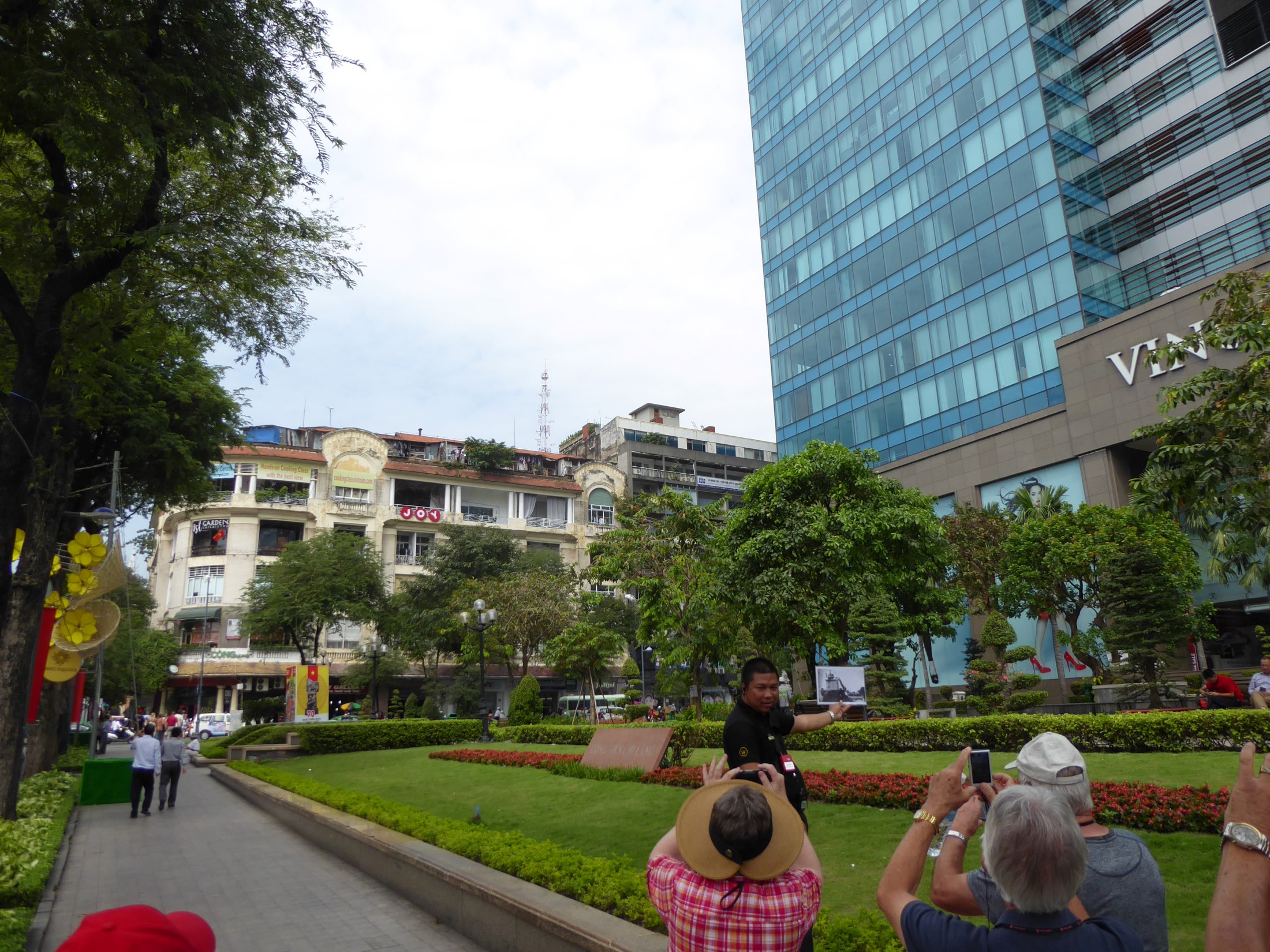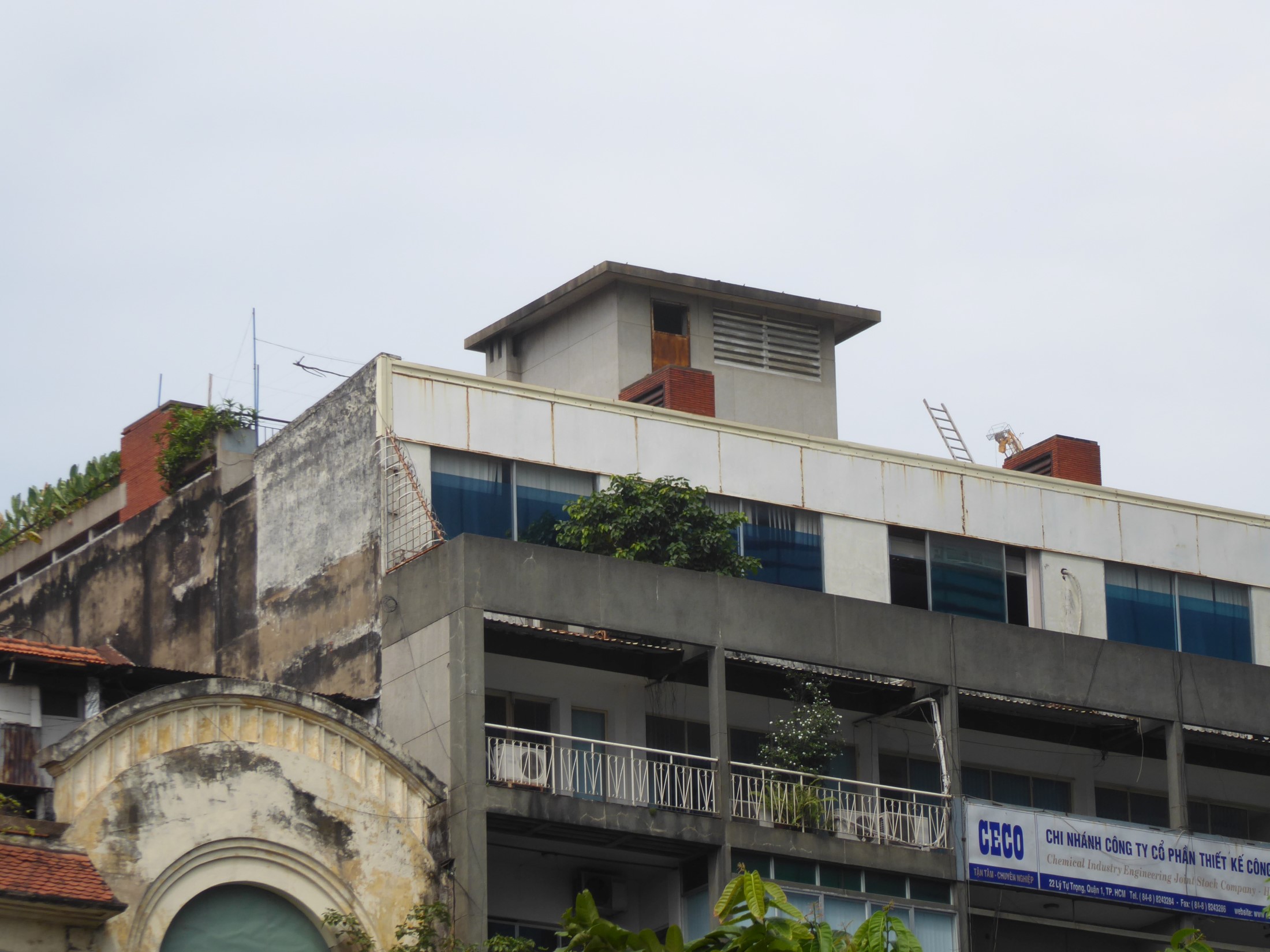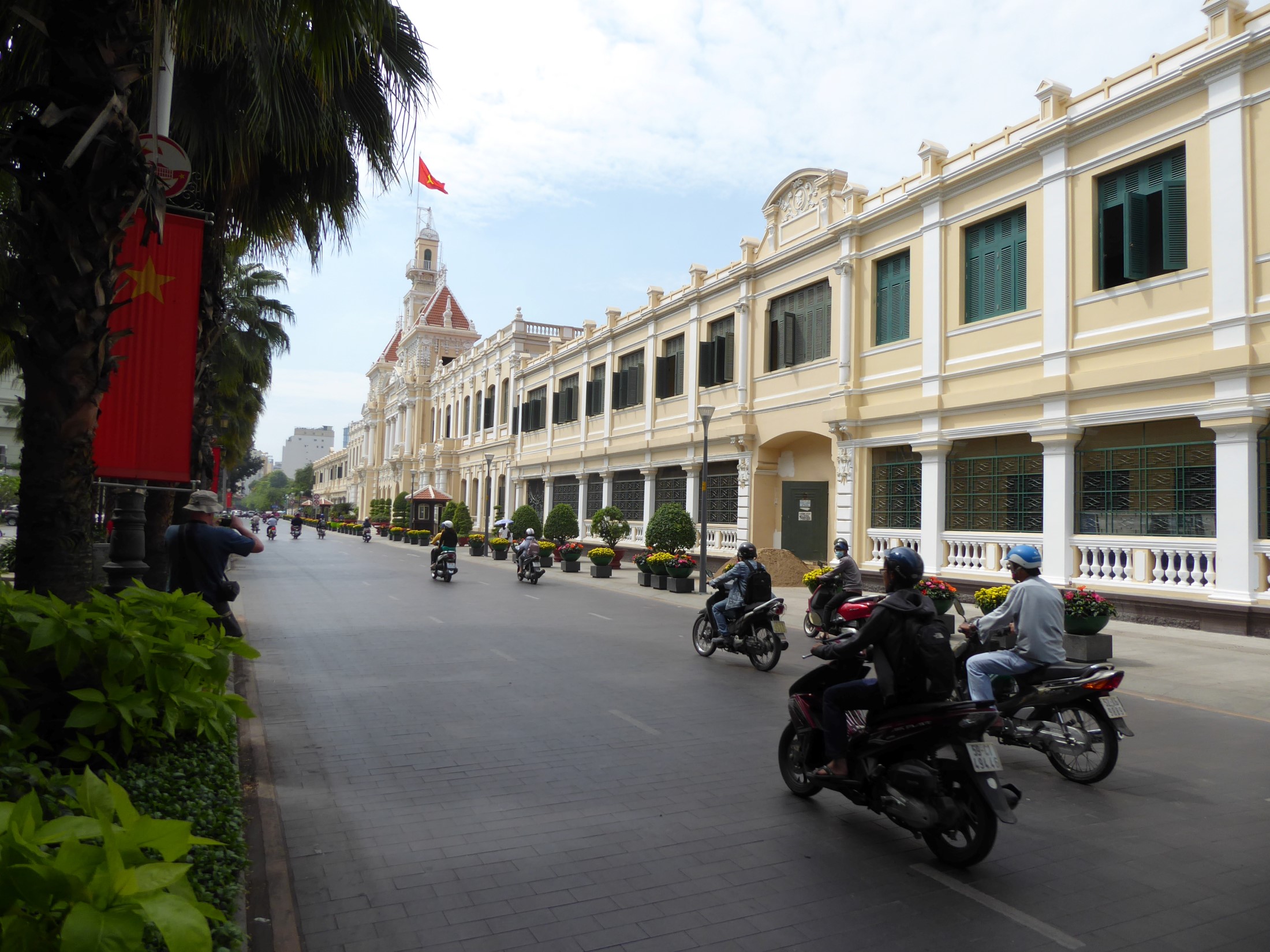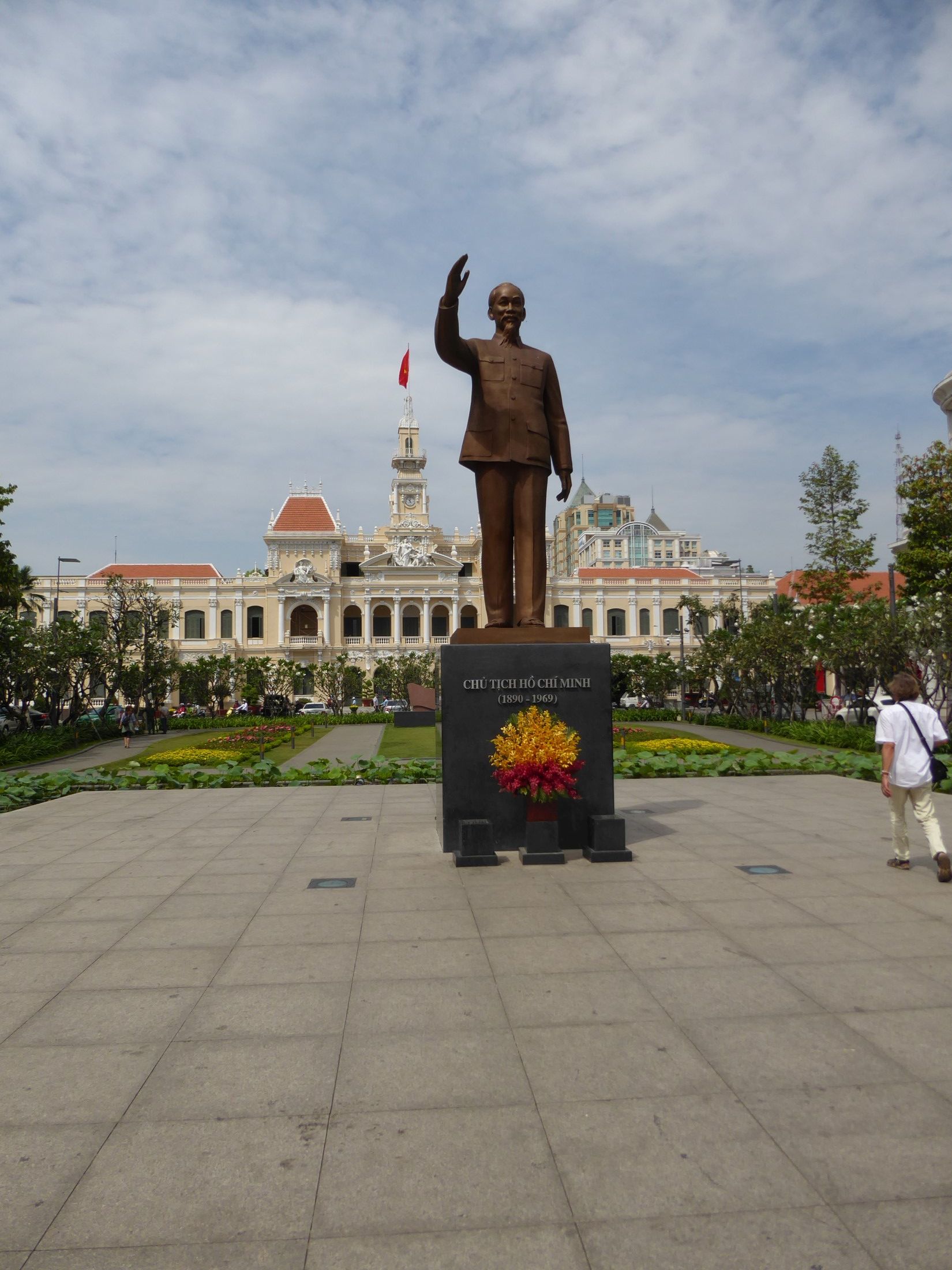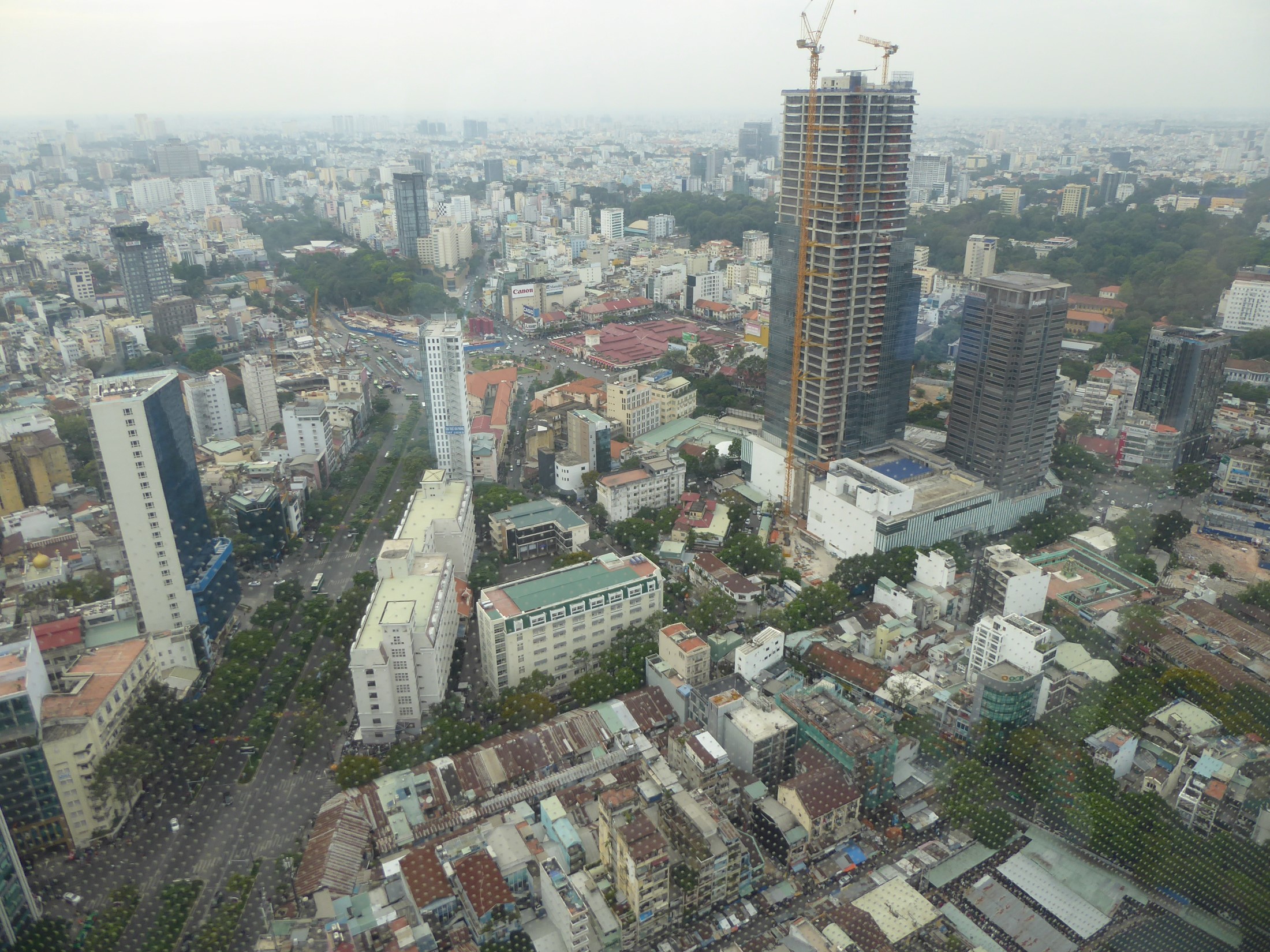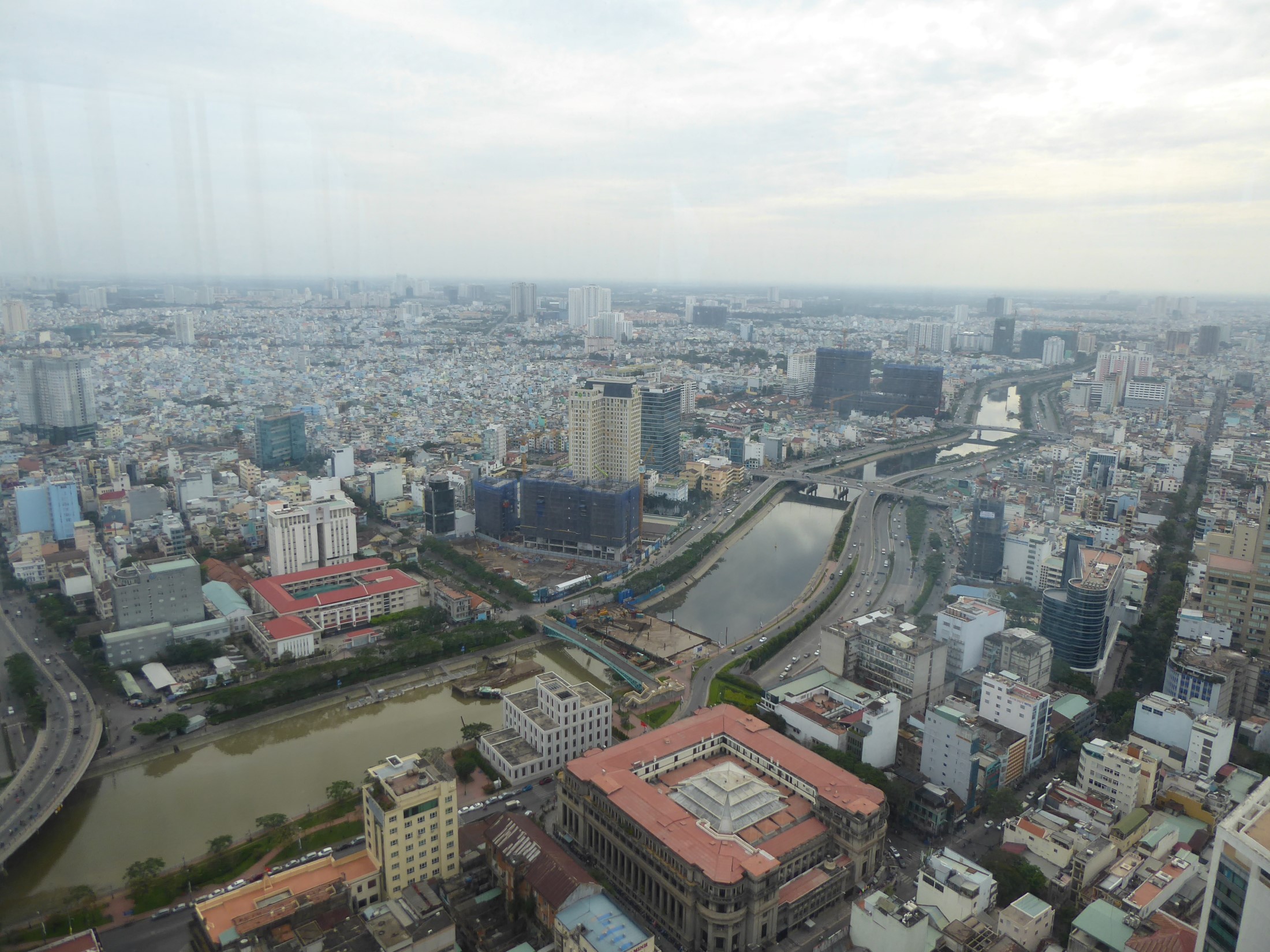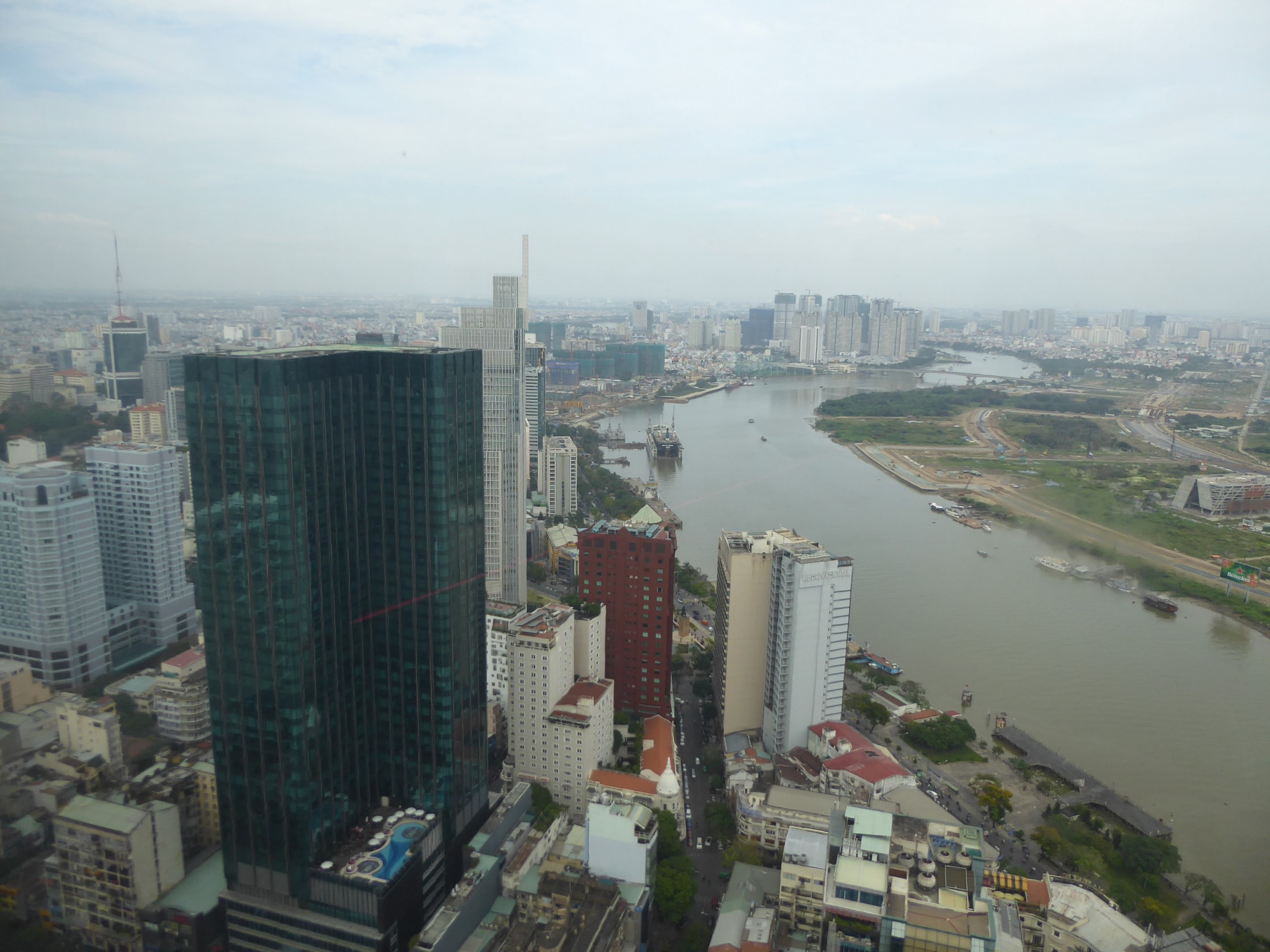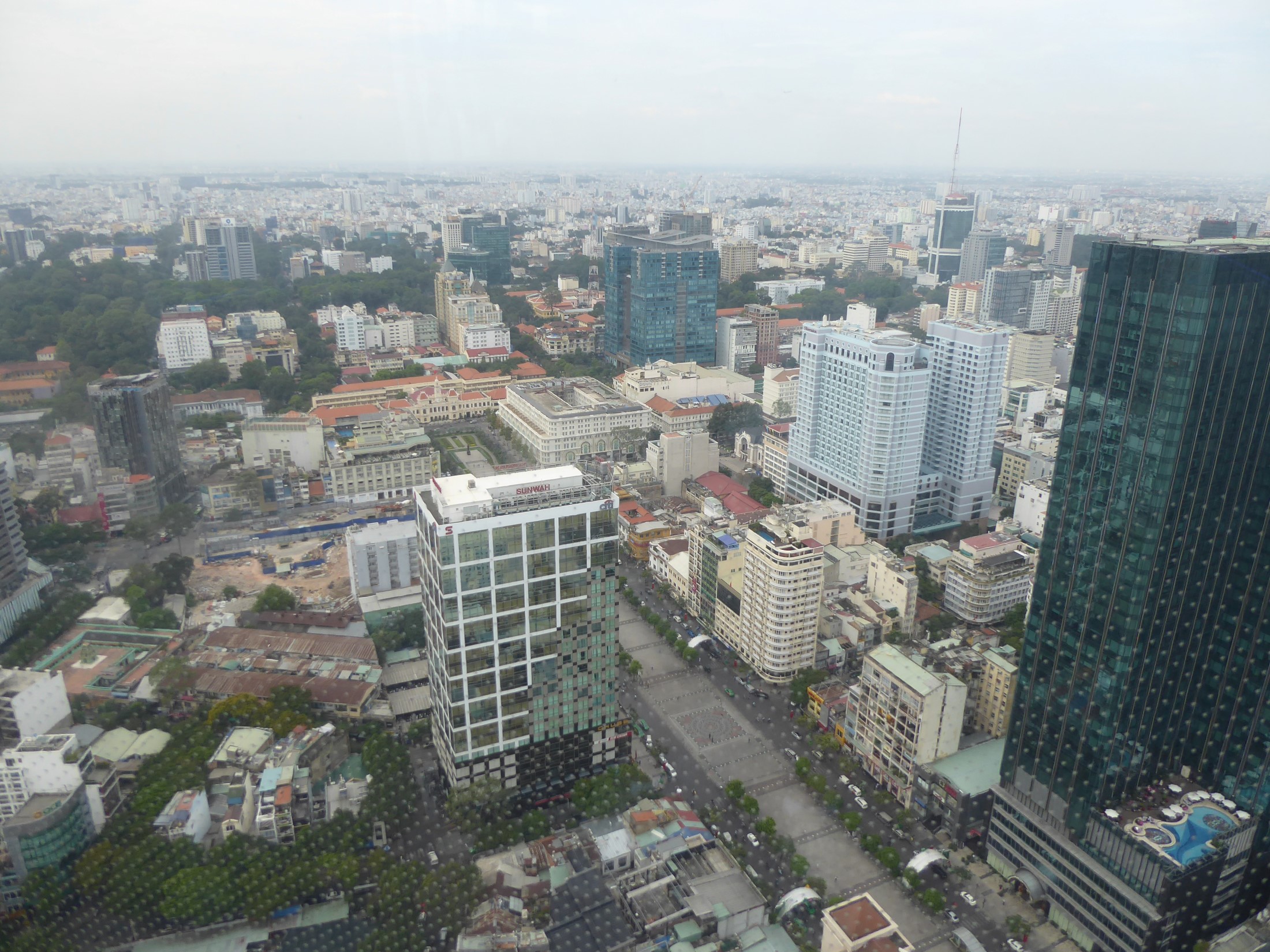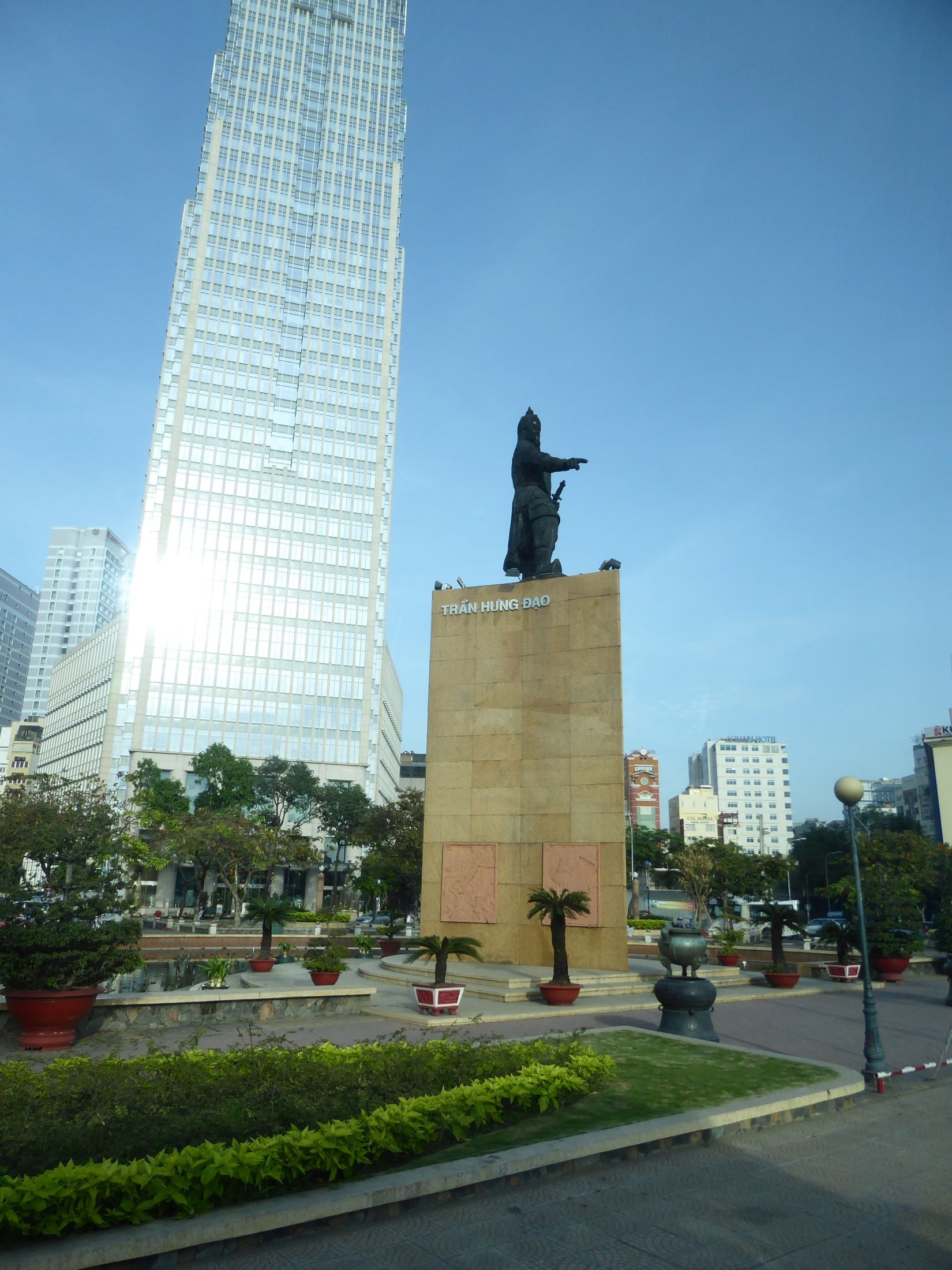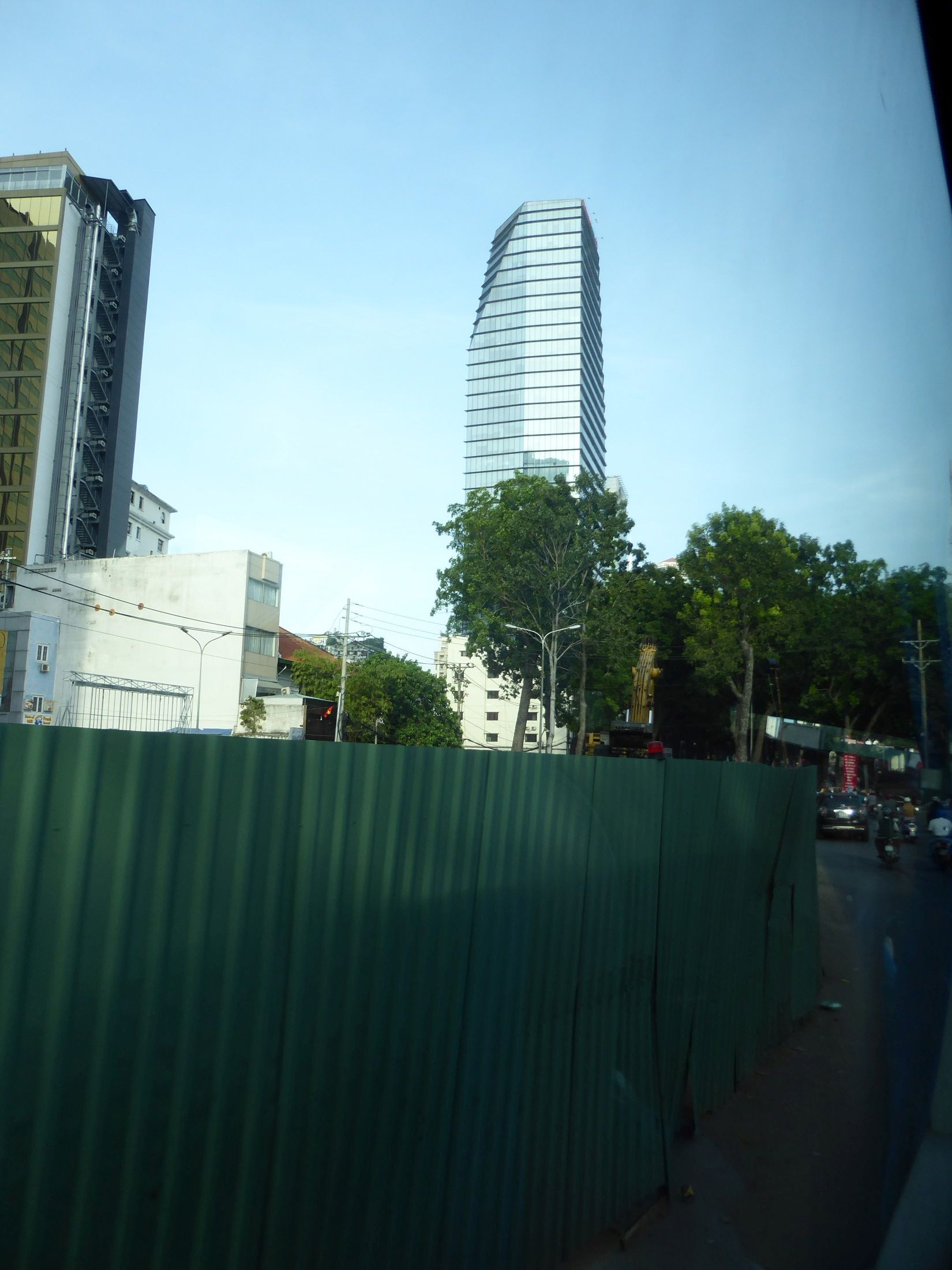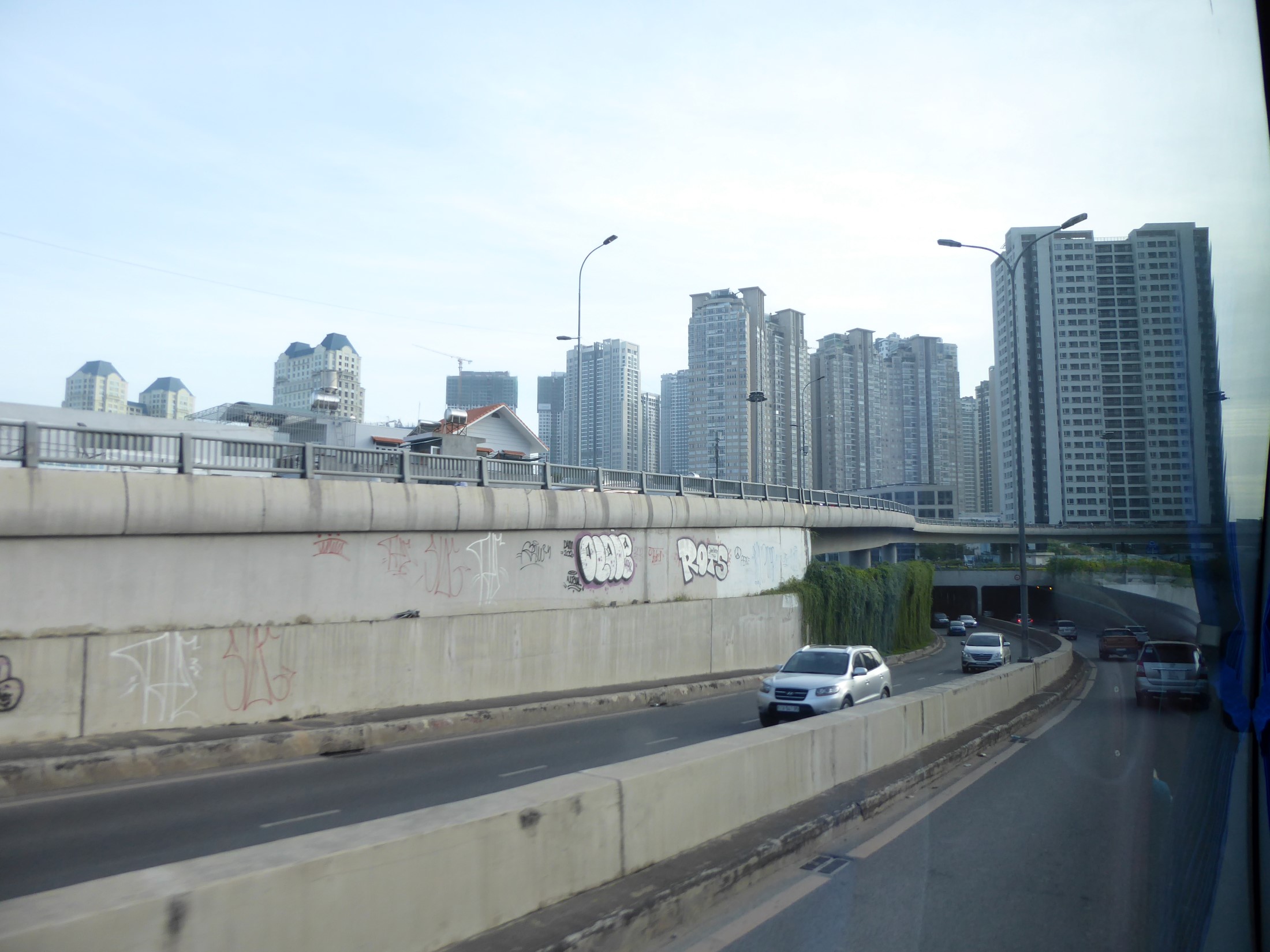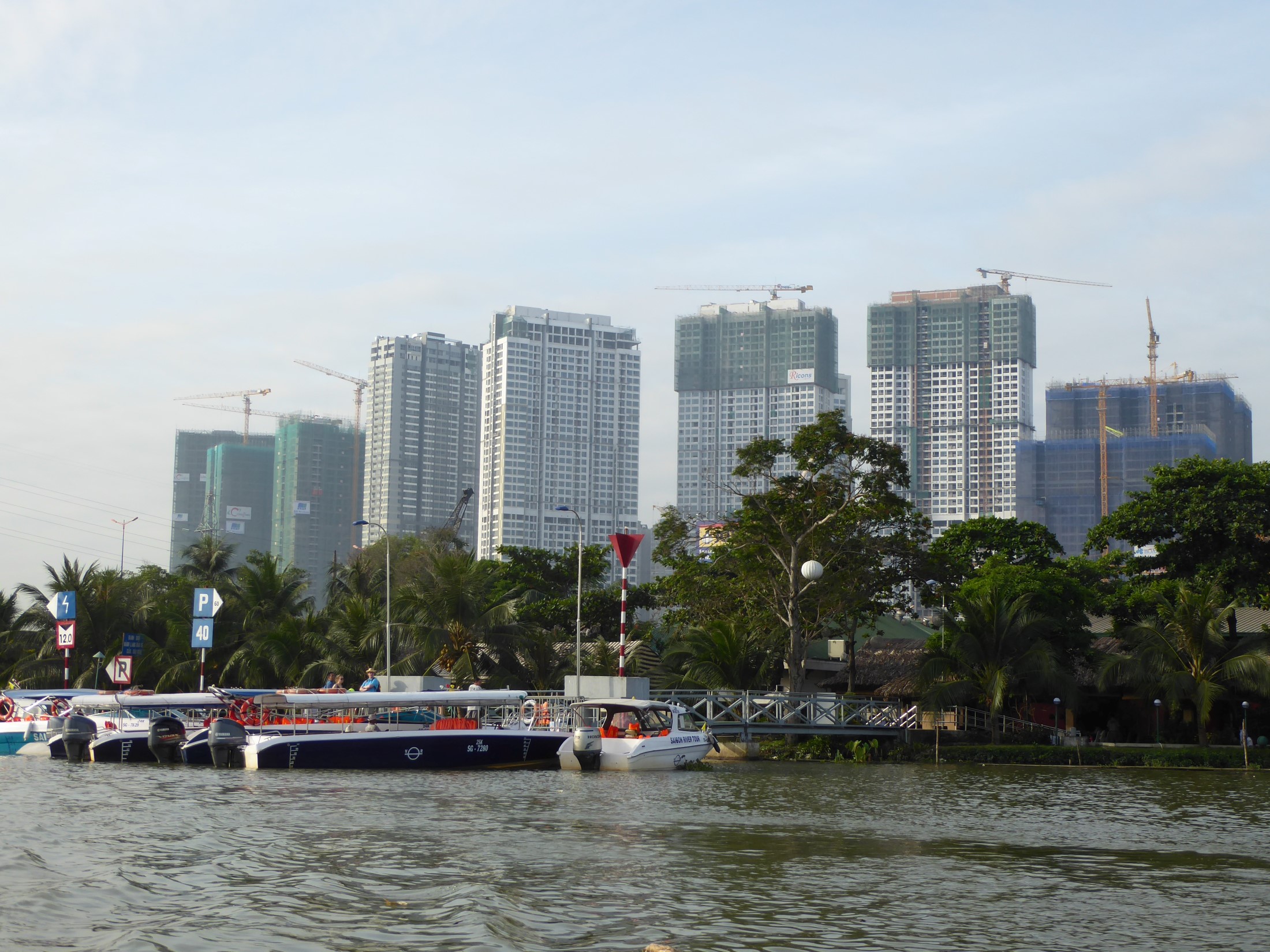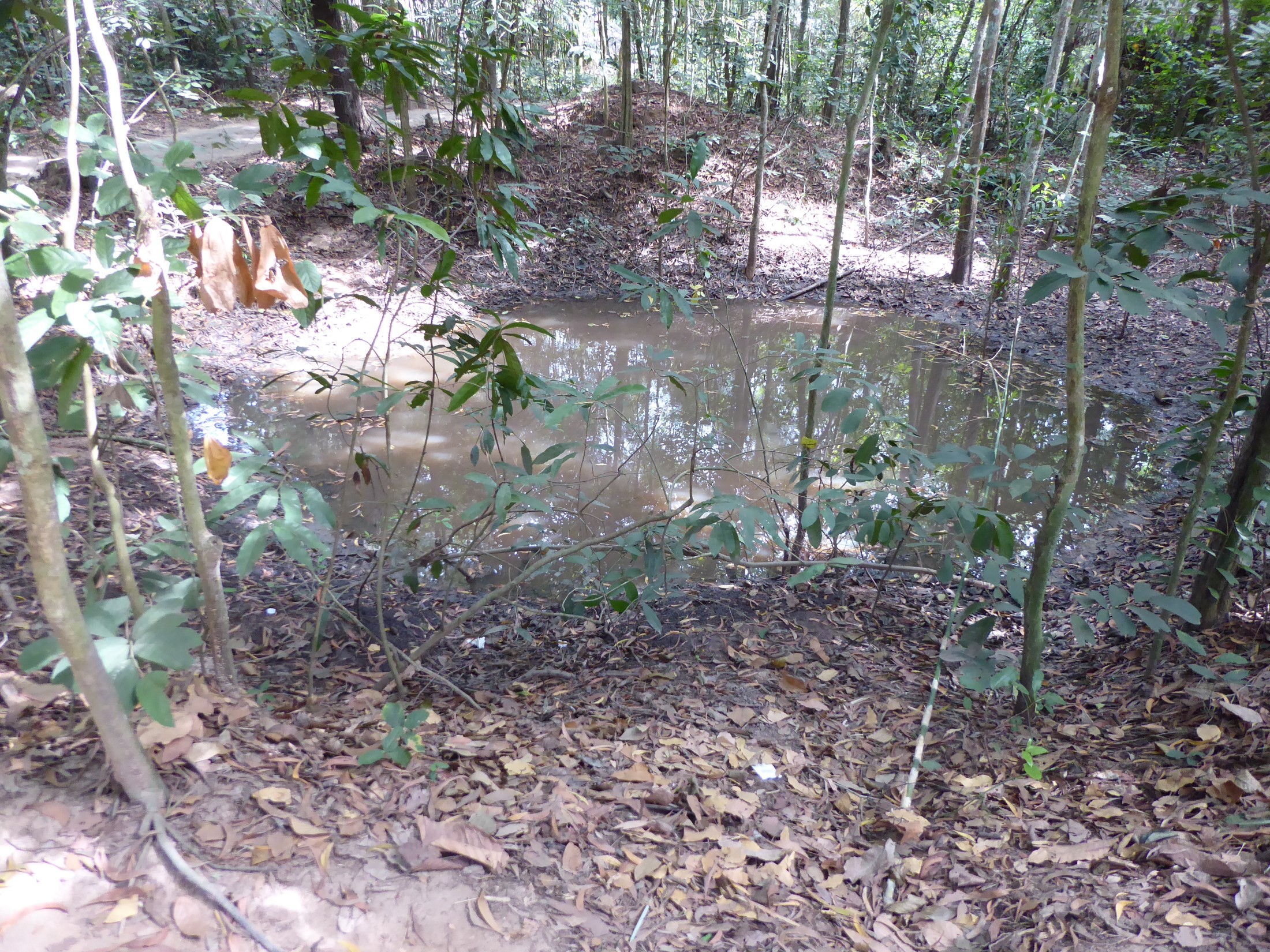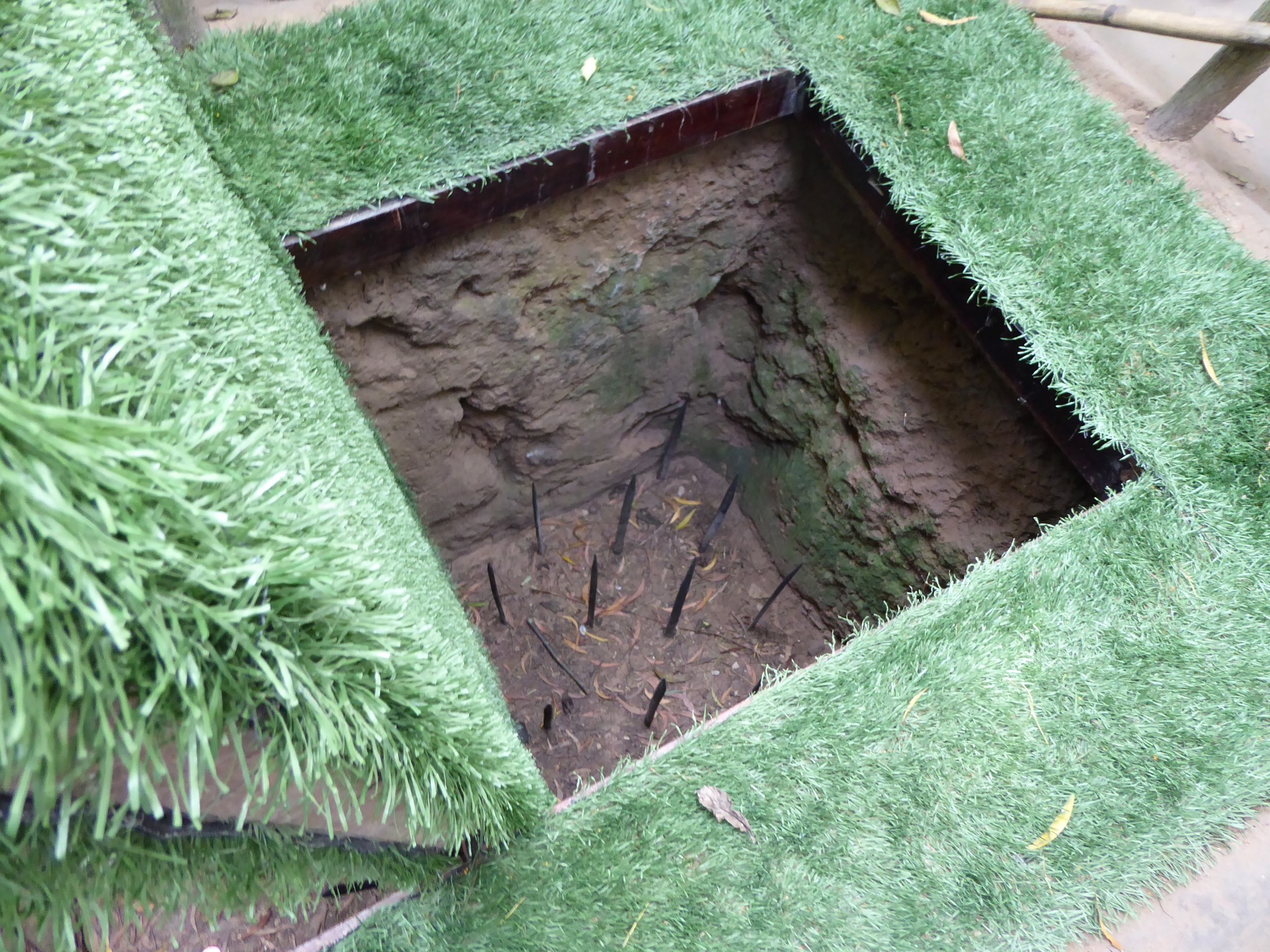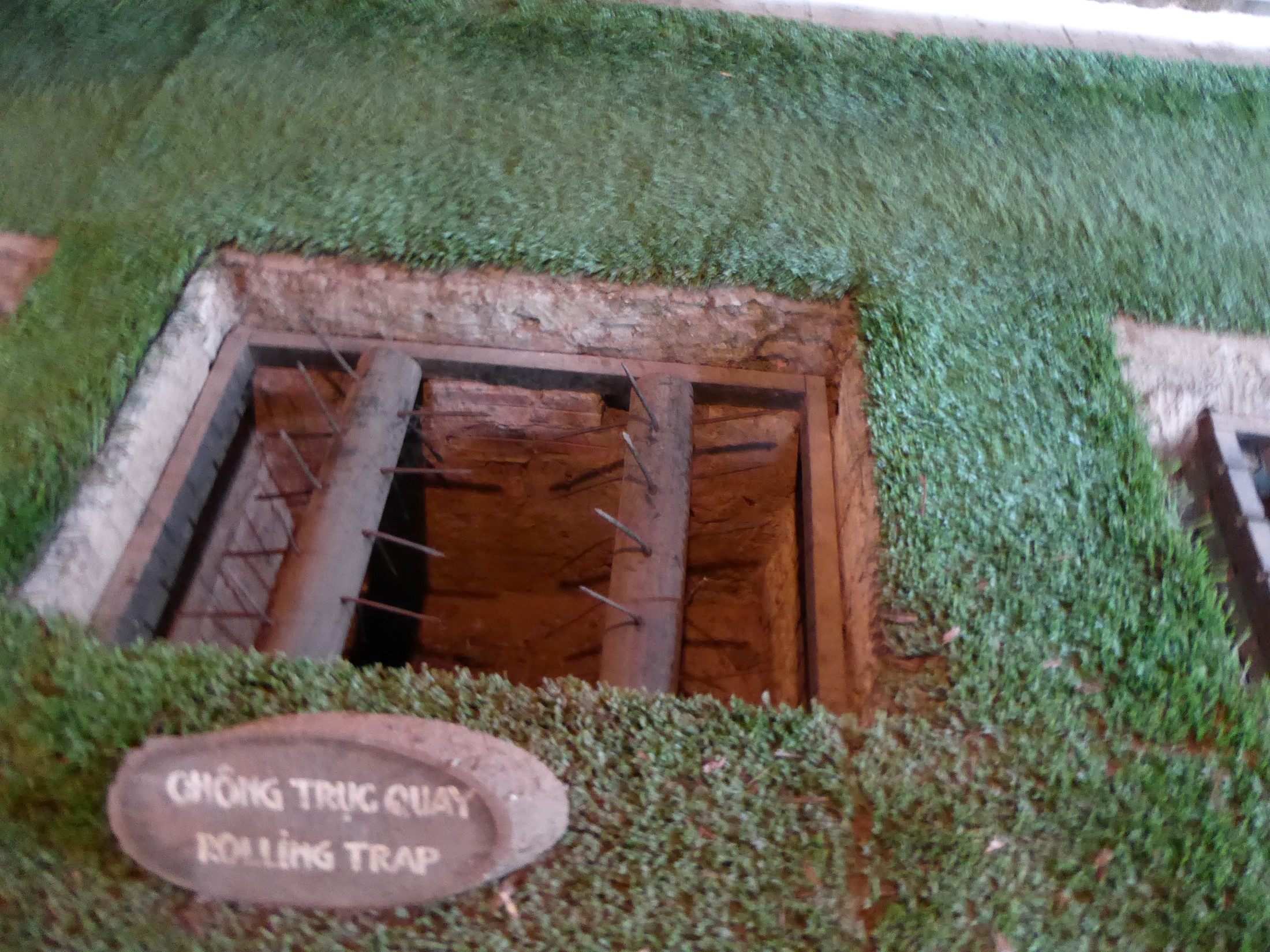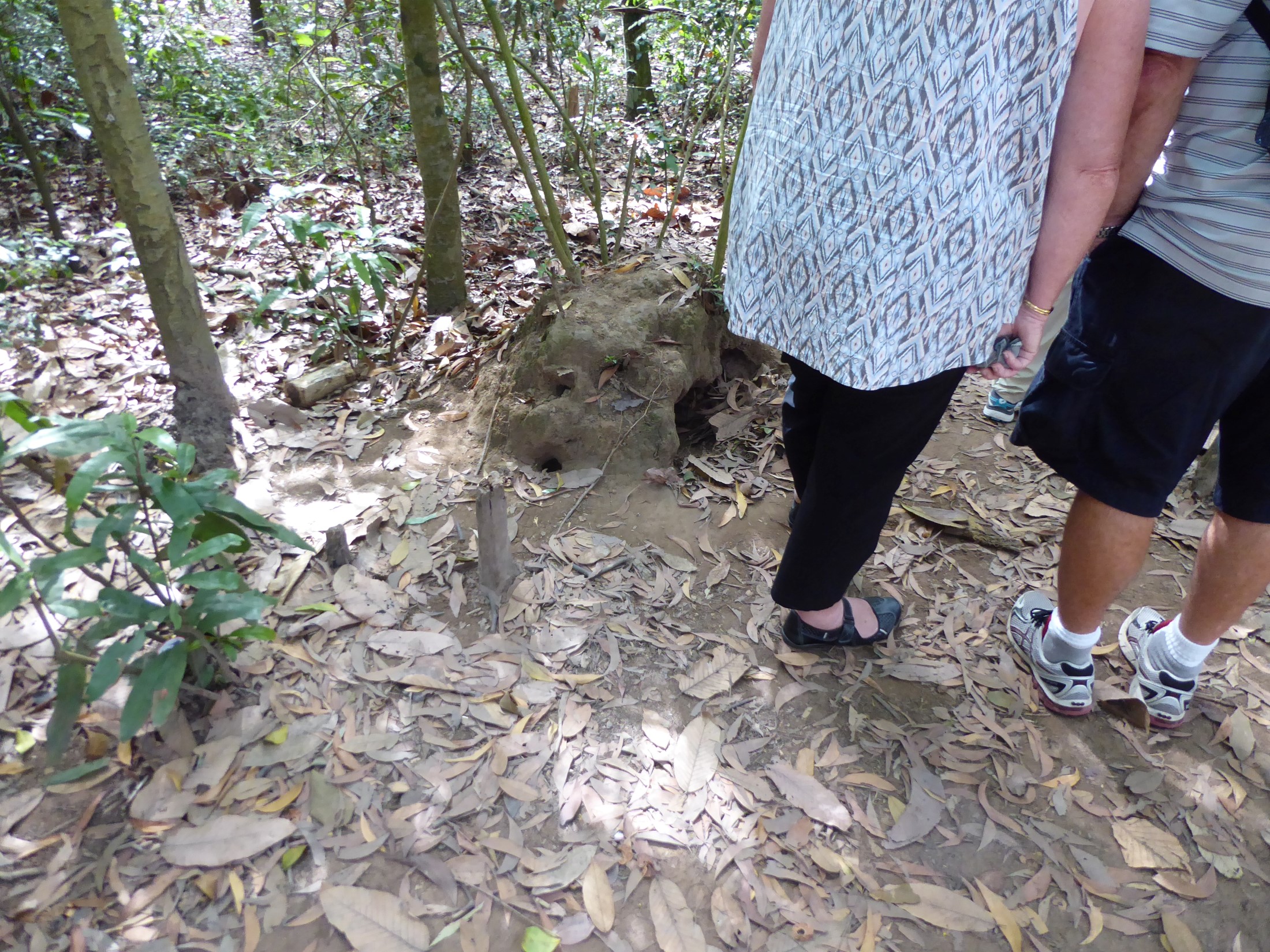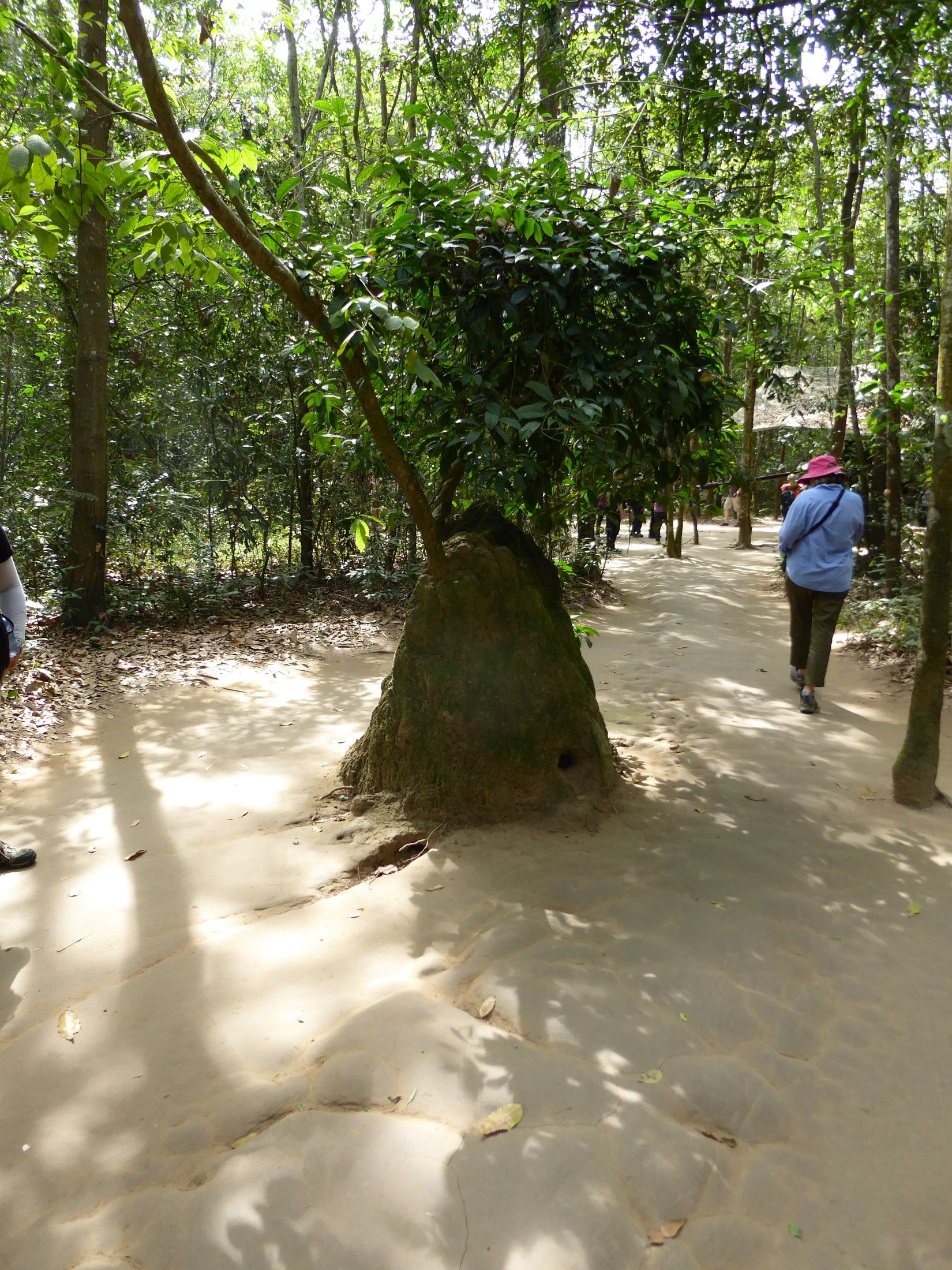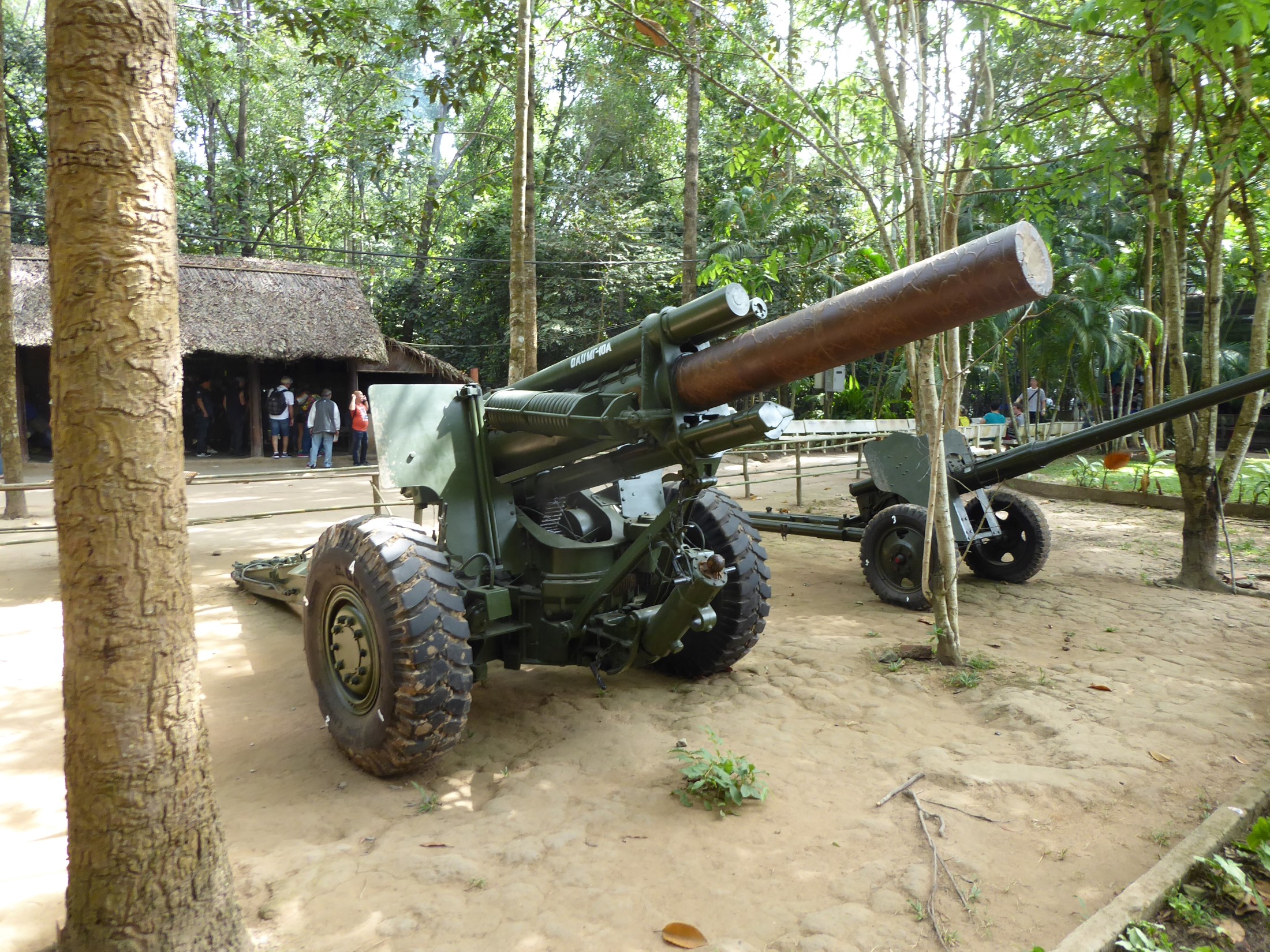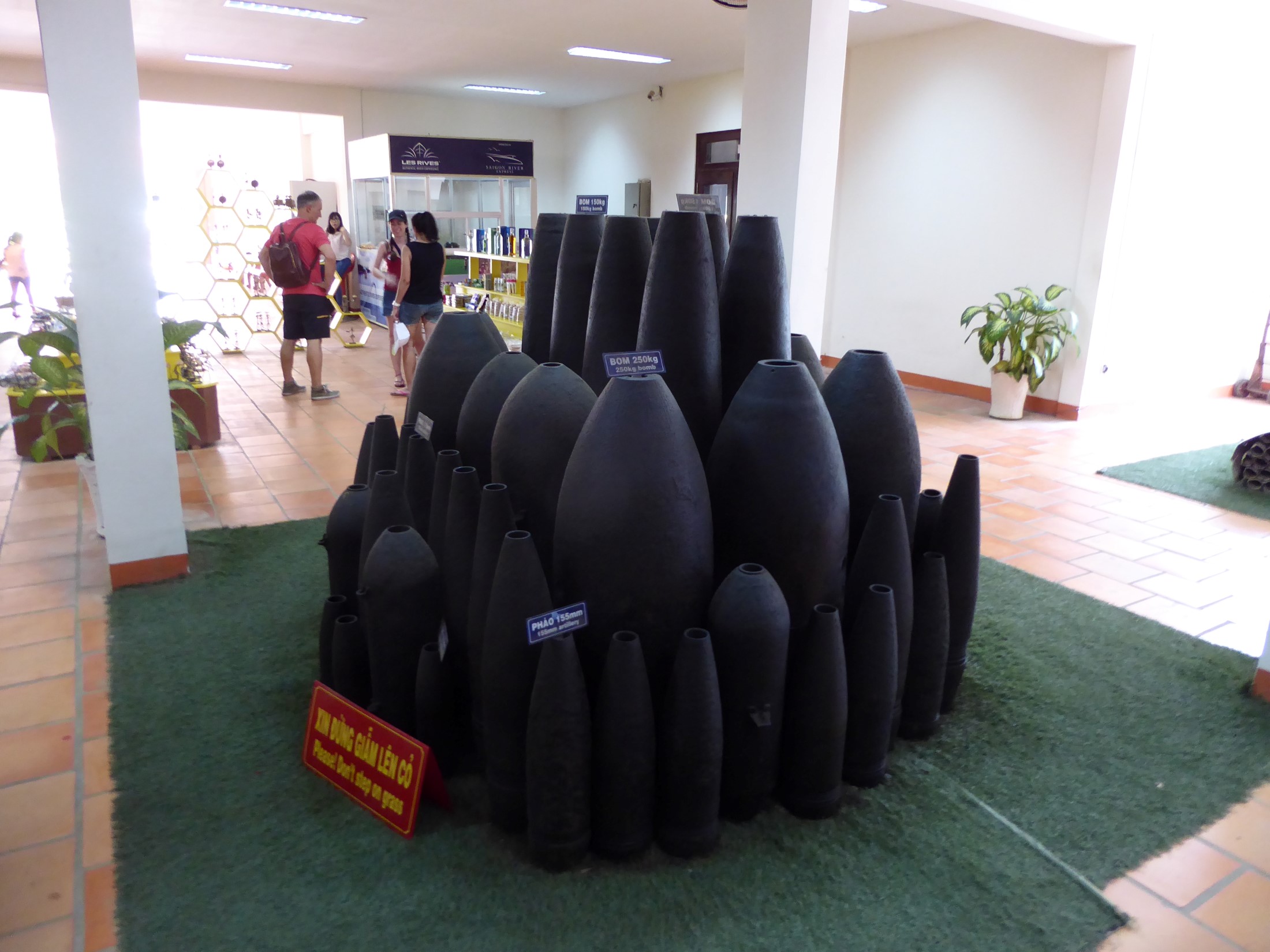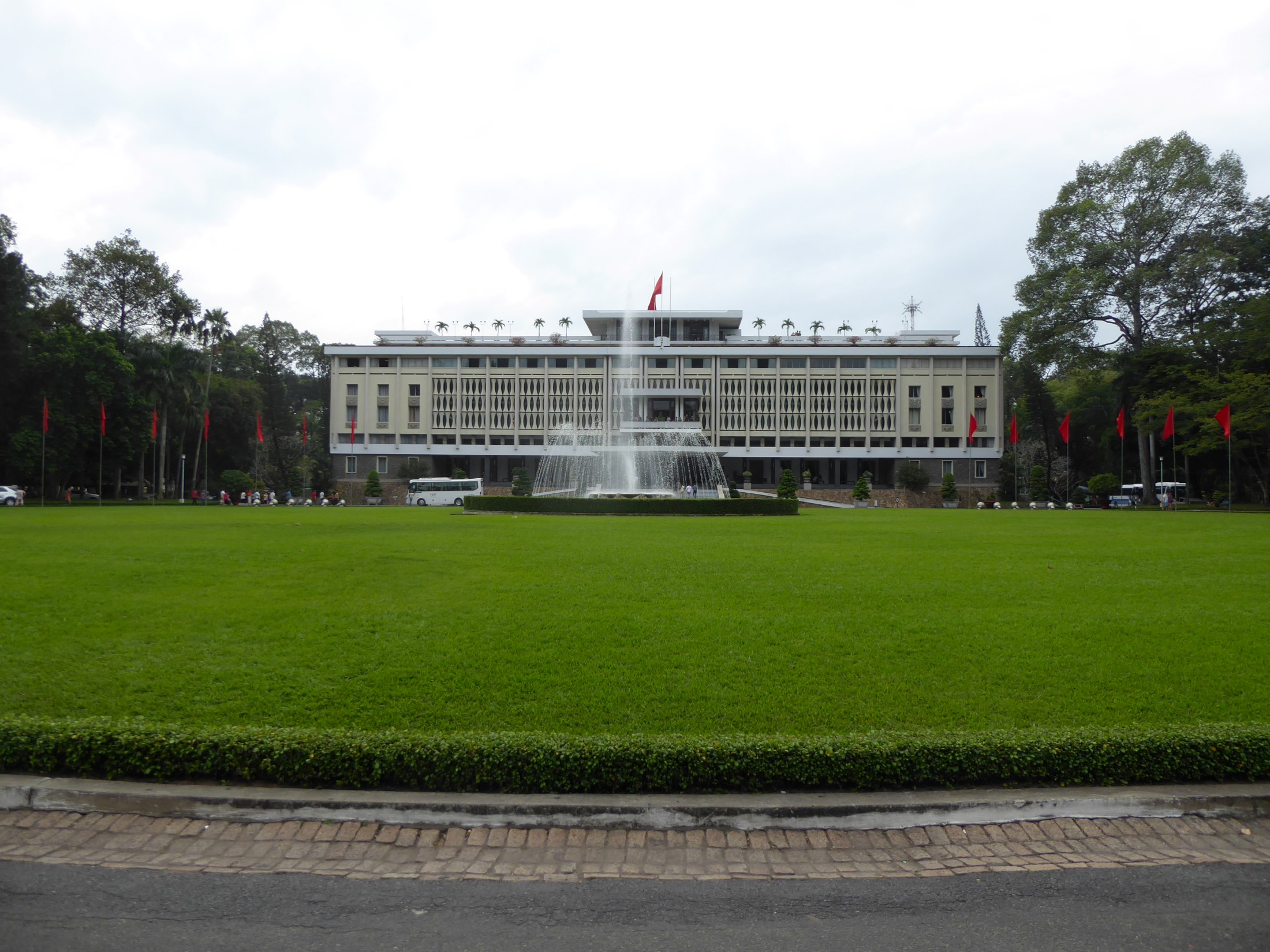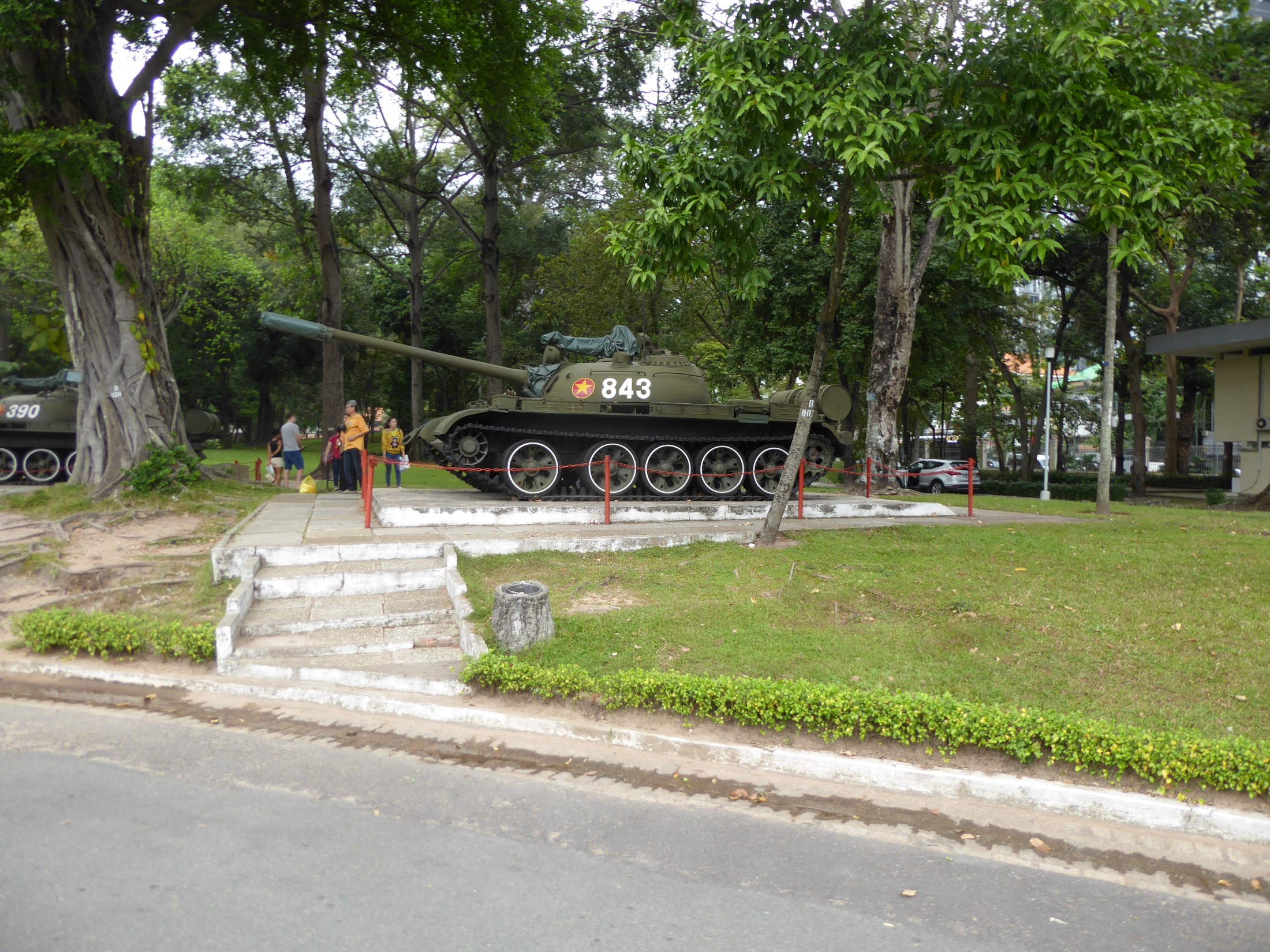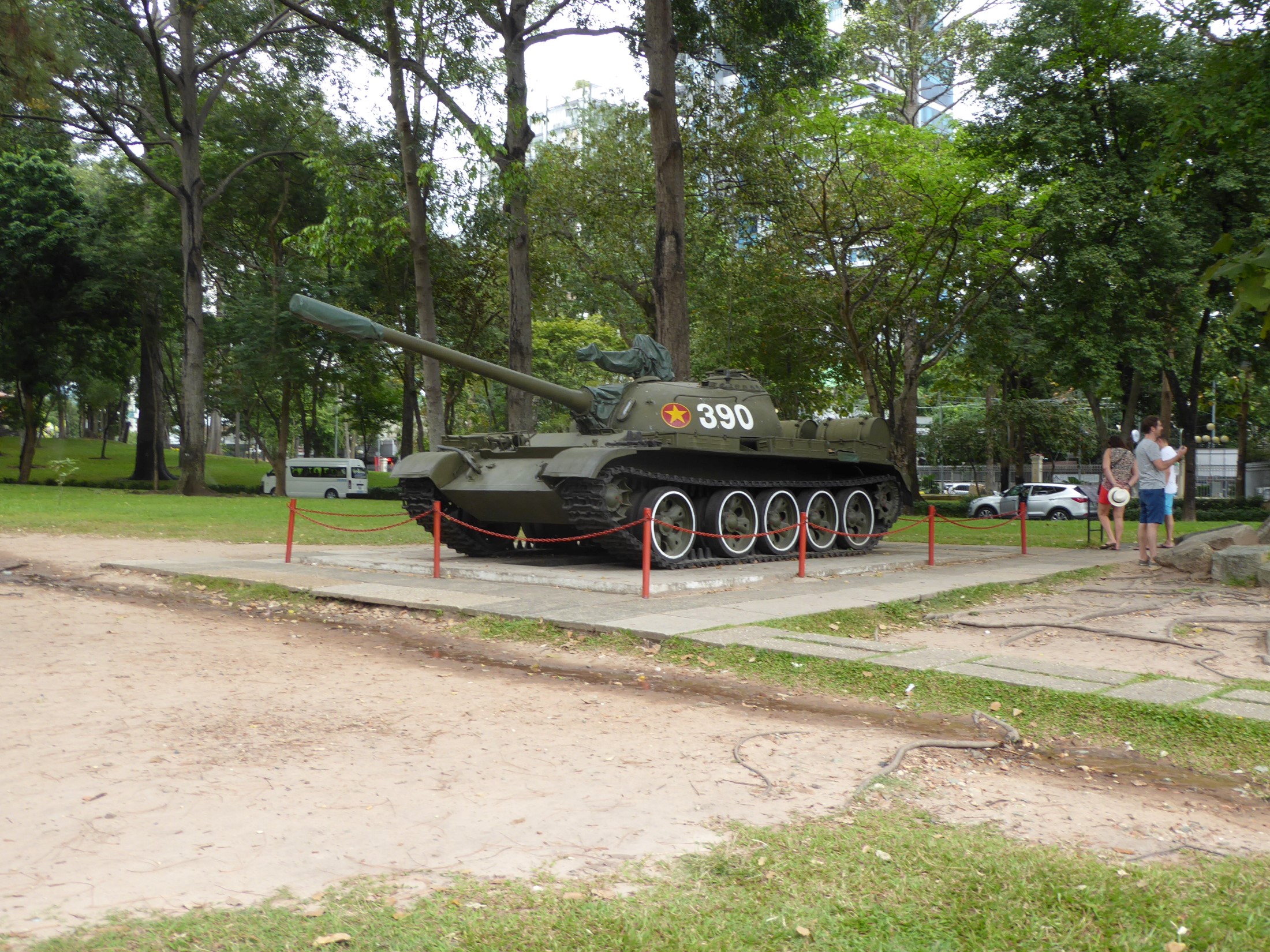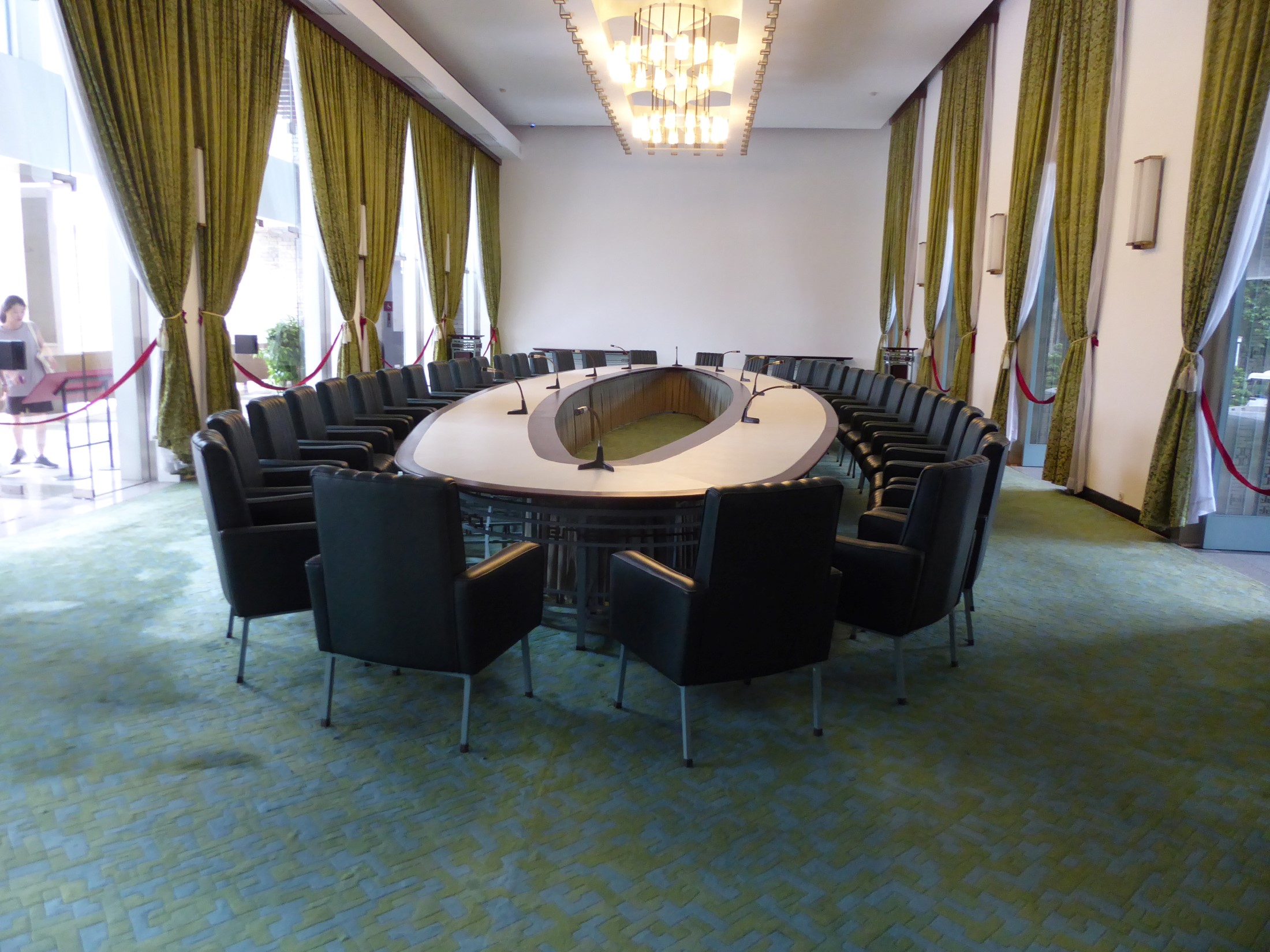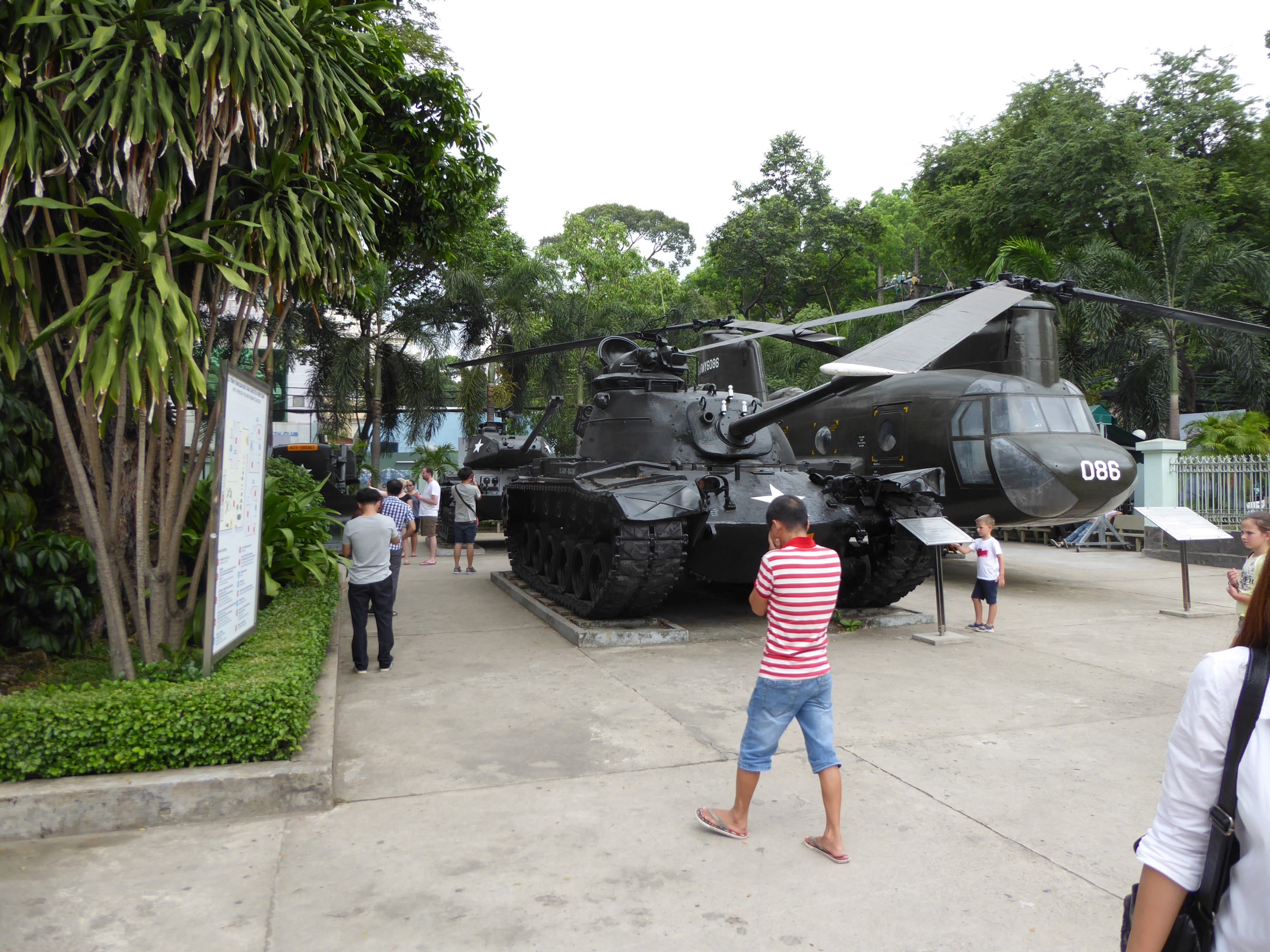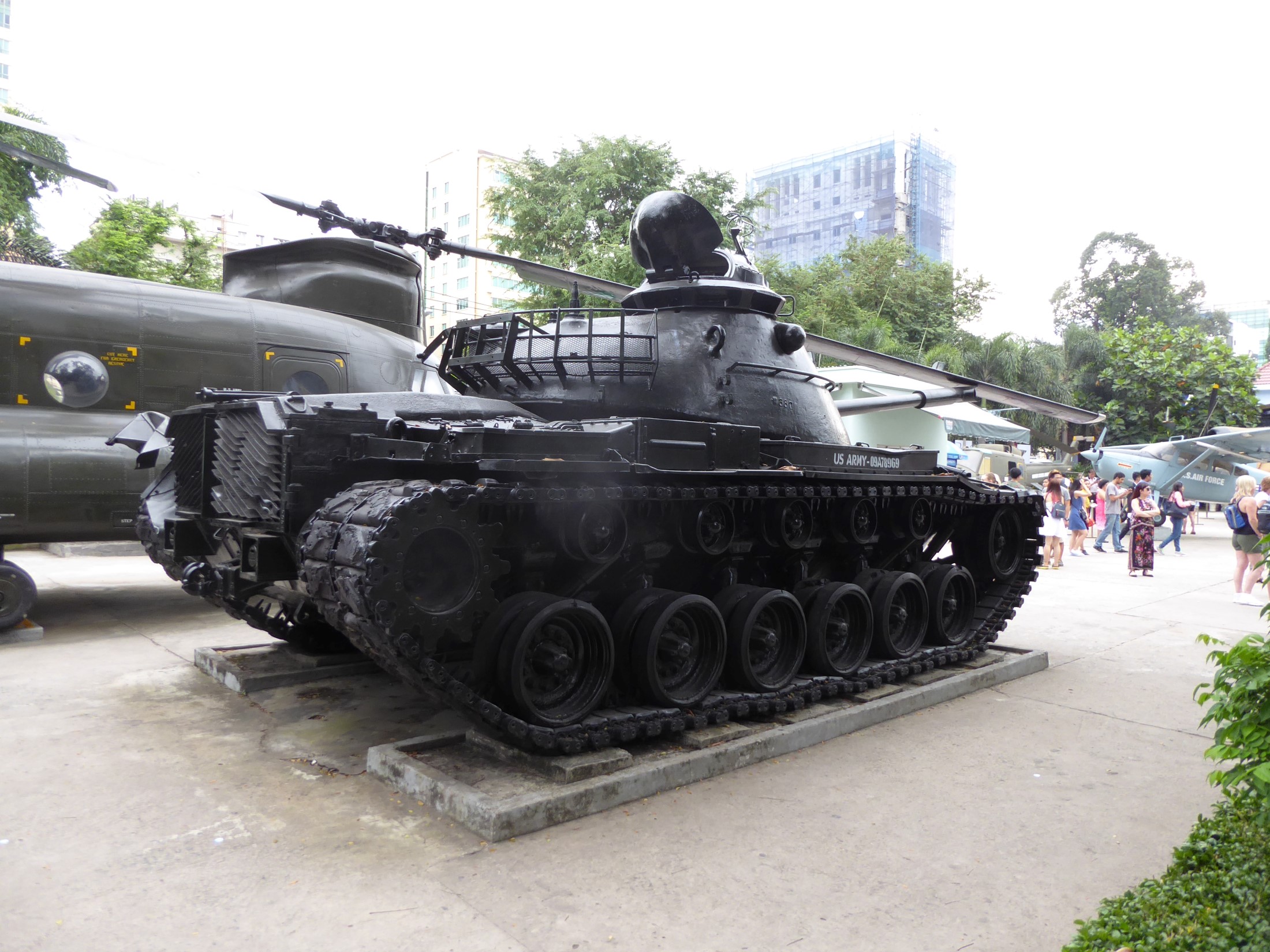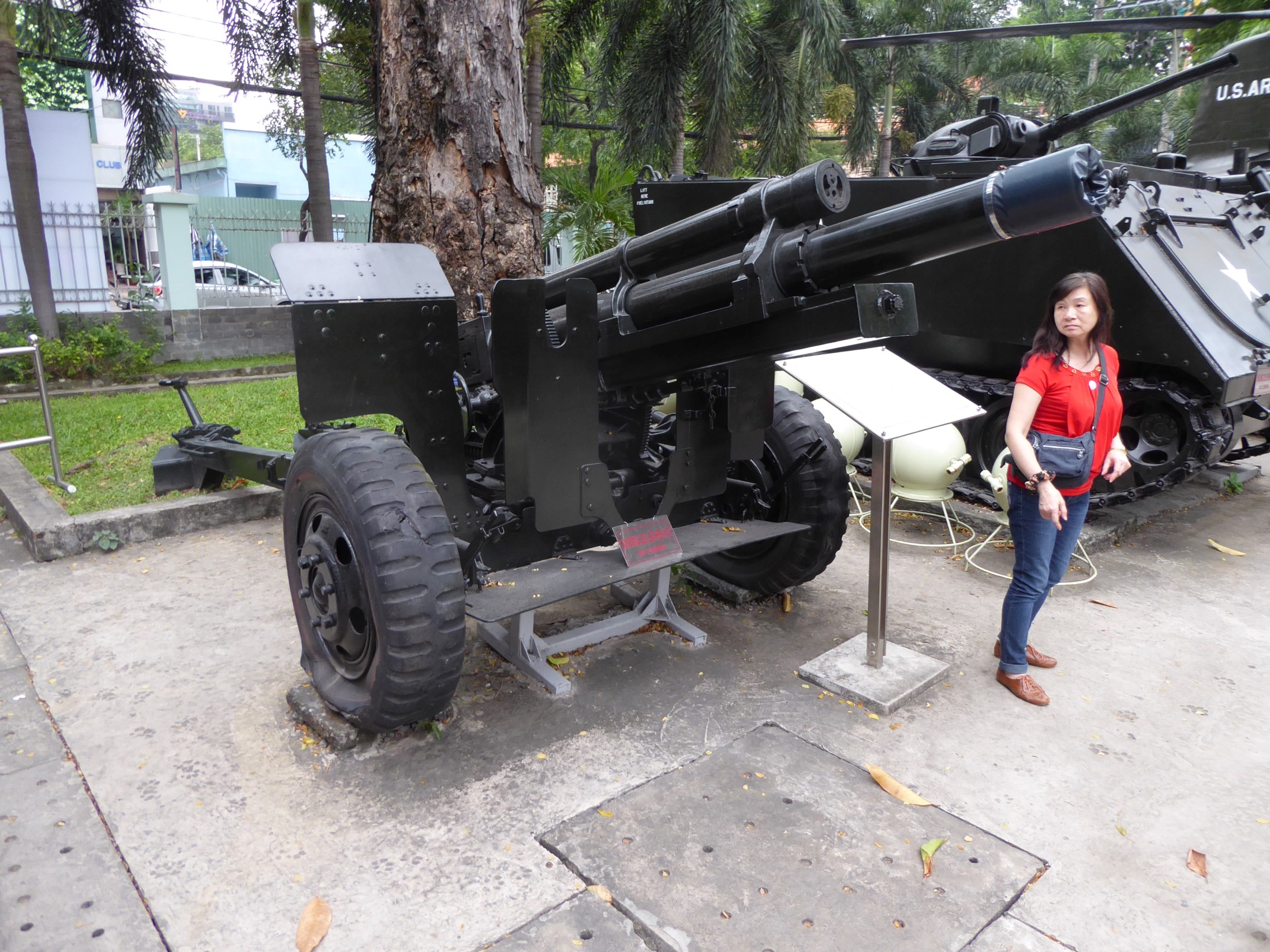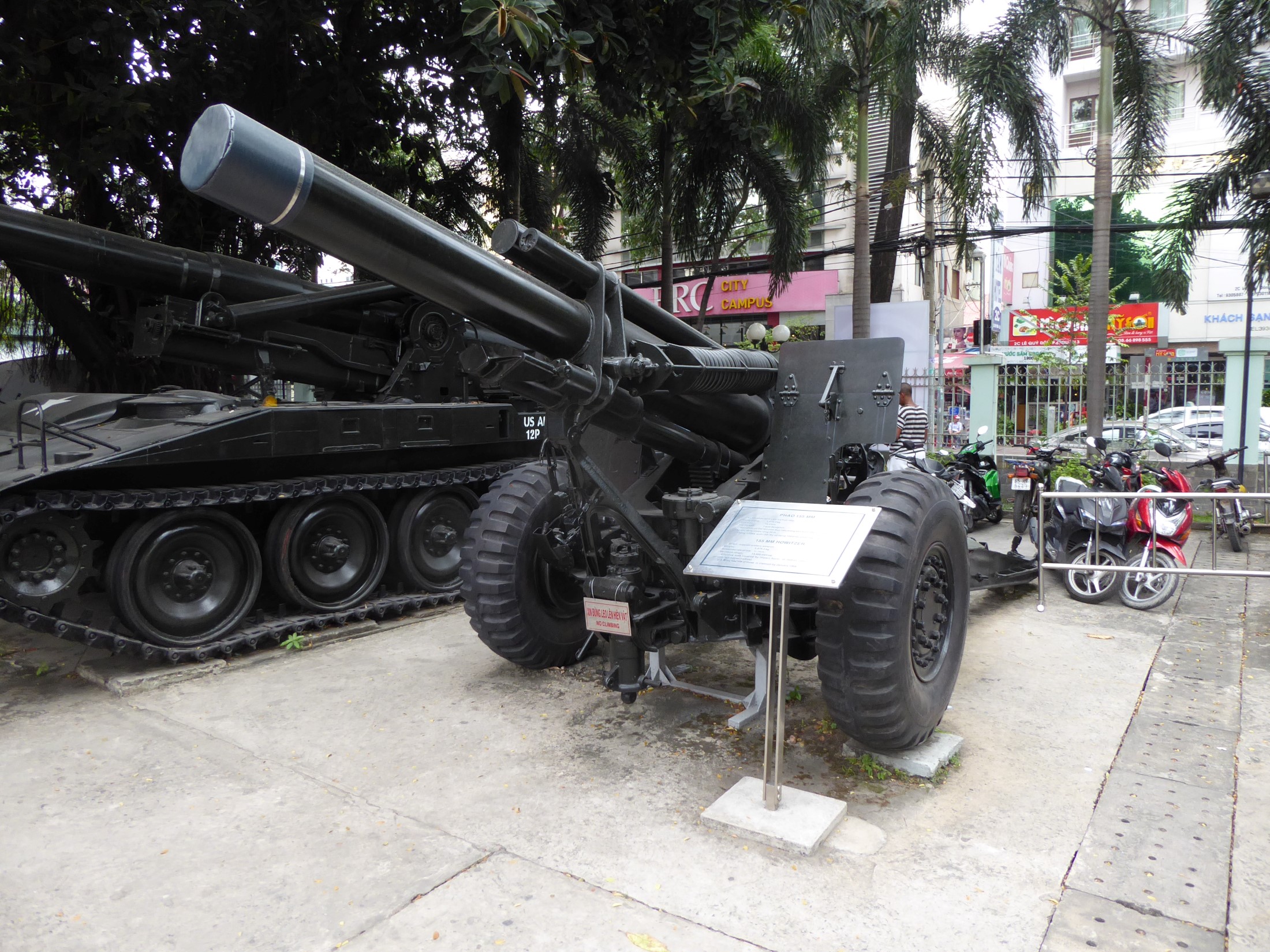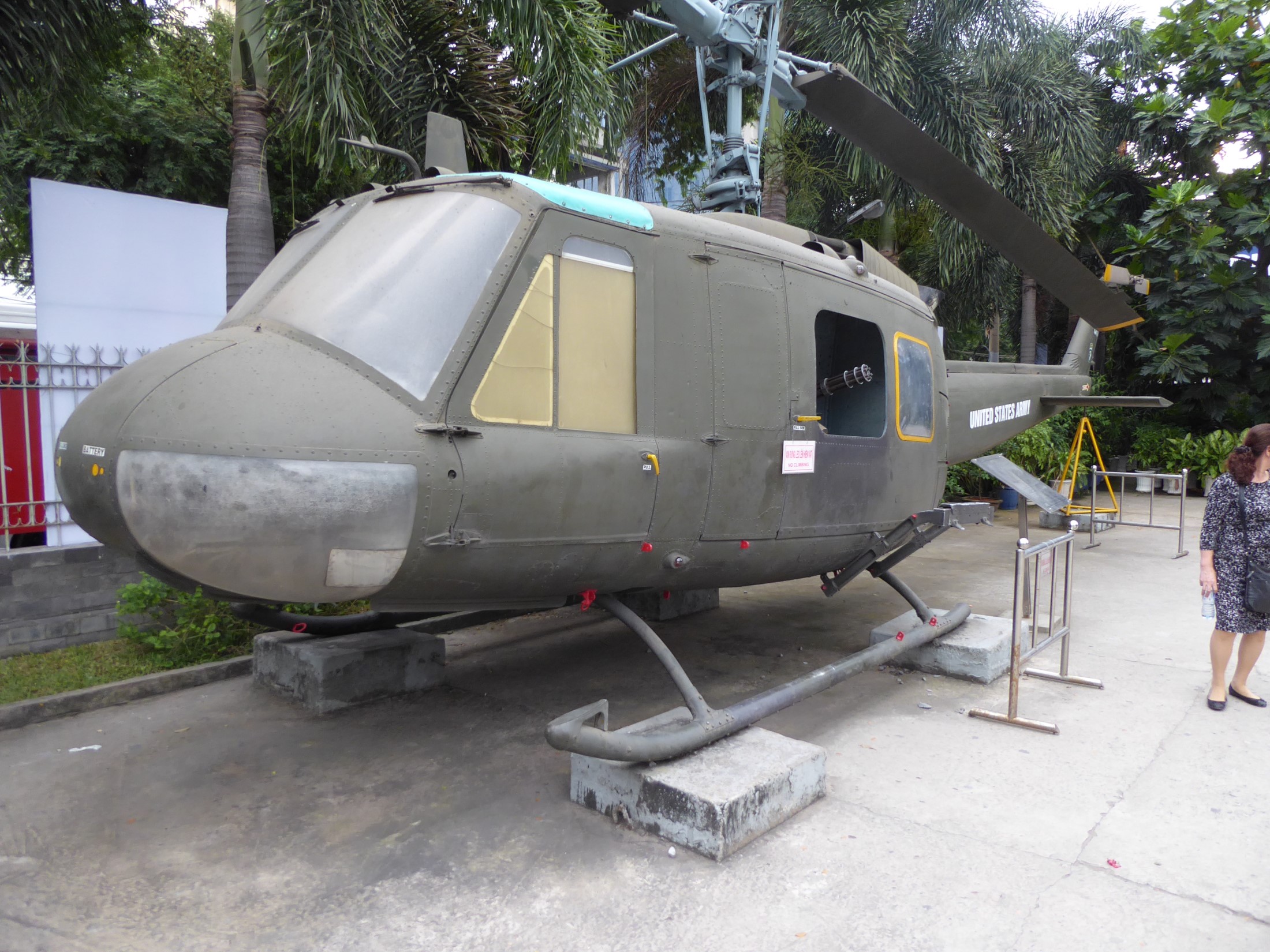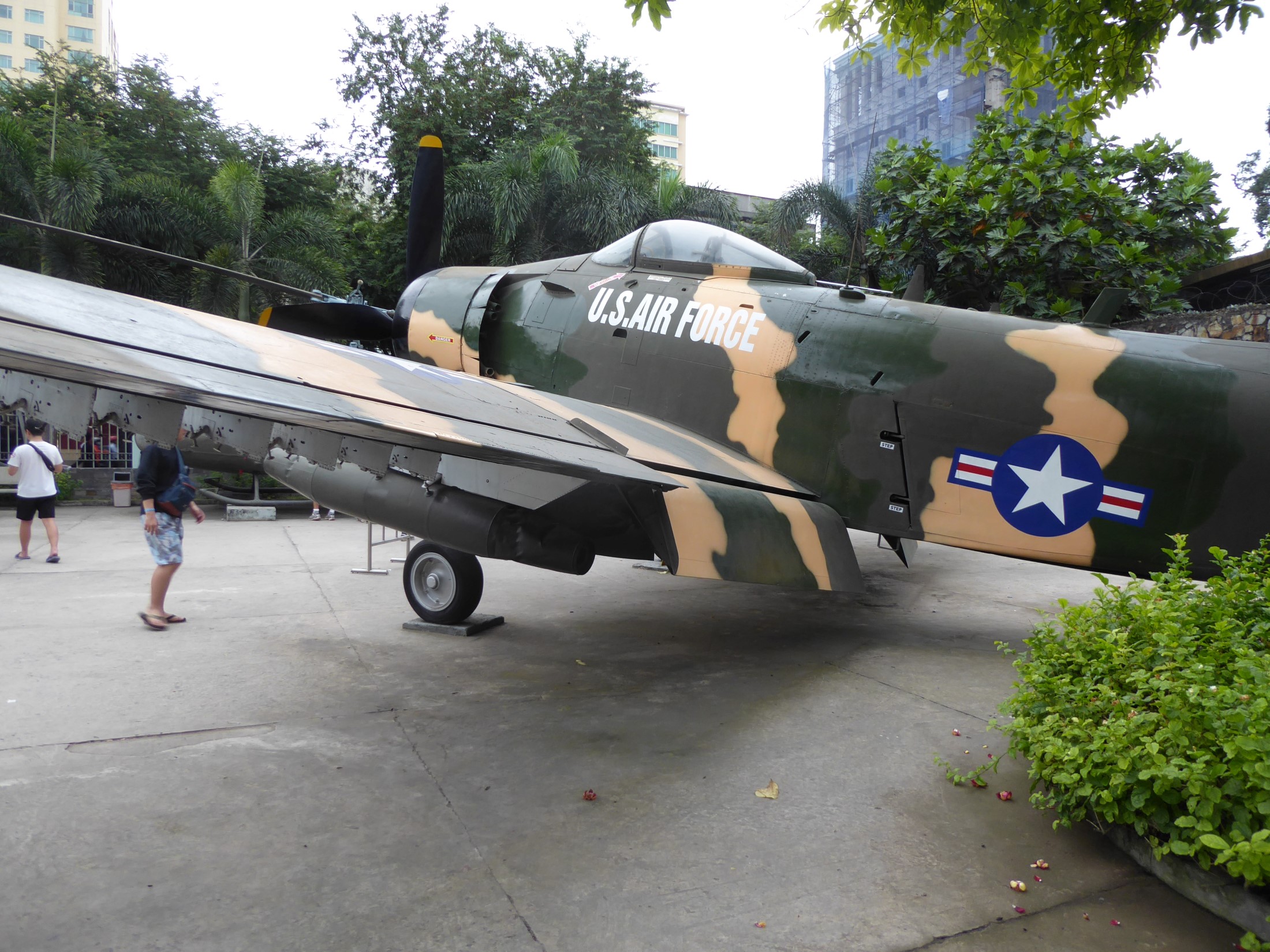Saigon
Edited 9 Feb 17
We have two days in Saigon. That's it!
Saigon is now called Ho Chi Minh City. It was renamed in 1976 after when the Vietnam war ended. A lot of the people we met still call it Saigon.
With a population of about 10 million Saigon is a very large city and quite modern. There are about 7 million motor scooters in Saigon so just getting across a street can be very challenging.
We have only two days here. It would definitely be worth coming back again someday but there are so many other places to visit before the grim reaper comes.
These are a couple pix I stole from the internet.
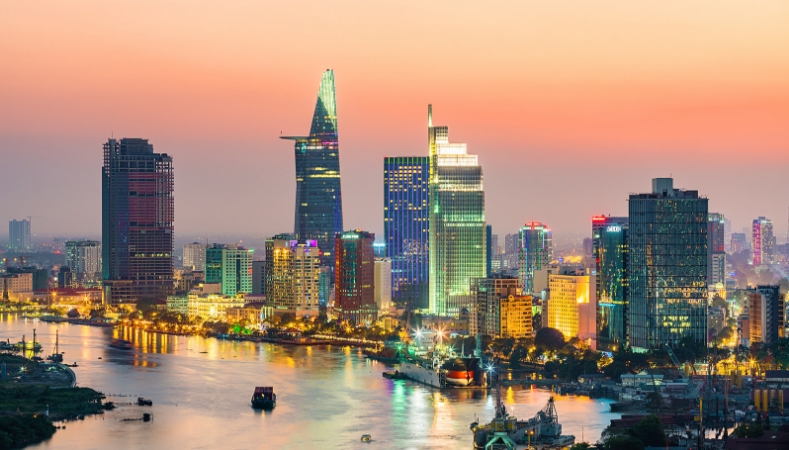
This is the Bitexco Tower. That's the observation deck (and helicopter pad) sticking out near the top. We went up there and there's some pictures later on.

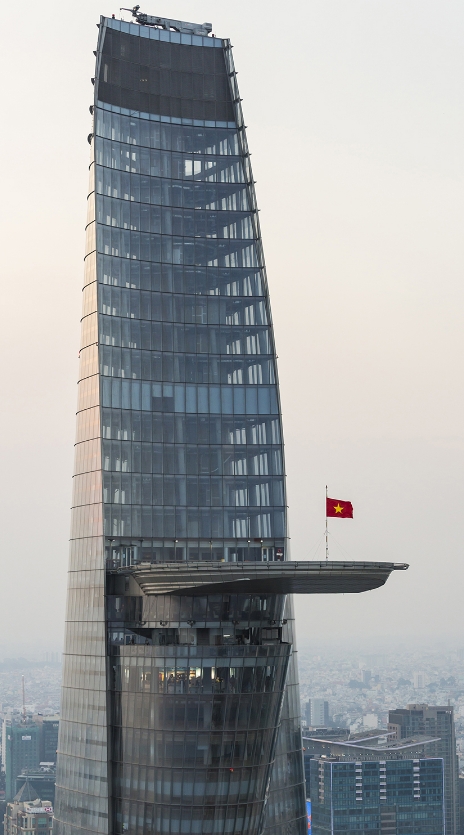
It's like a real city; they have skyscrapers, office buildings AND McDonalds.
There's lots of construction going on - a good sign the economy is healthy.
A very funky apartment building.
So we go to visit a couple "landmarks"
Notre Dam Cathedral. A remnant of French rule.
Inside
And the post office
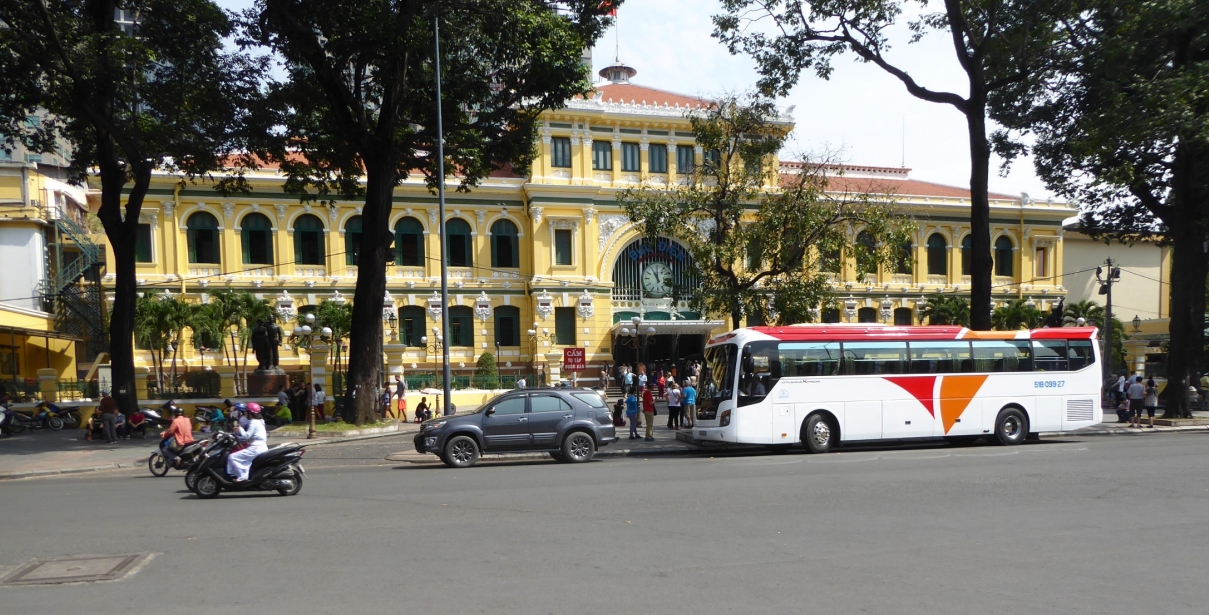
and its a hoppin' place. A photo of Ho Chi Minh displayed prominently.
And the inevitable ornamental marriage rehearsal. They look about 12 years old.
A couple young ladies strolling about on a nice day.
One of the most iconic images, of Saigon, is the one below showing people fleeing the city by helicopter as the North Vietnamese army was just about to win the war. It is wrongly assumed that the building was the US Embassy building but that was not the case.
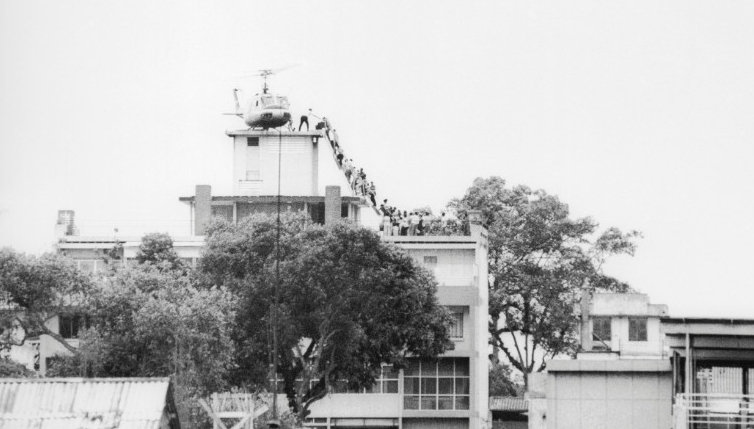
Here's a shot of it taken today.
Zoomed. Ha! The ladder is still there!
Our group listening to our guide Nghia explain about the war.
Nghia's father was a military policeman working for the Americans during the war. When it became apparent that the North was going to win his father knew that if he was captured by the Viet Cong it would be the end of him. So he destroyed all his papers and documents and moved his entire family to the central highlands of Vietnam. He had to start his life all over again but he survived and was able to support his family by smuggling coffee into Saigon and selling it there.
The parliament building in Saigon.
And Ho Chi Minh in front of it.
And a shot of our whole group in front of it. The bearded guy at the very right end was Allan and he had been sick for much of the tour so far. Lots of white hair.

Here's a few shots from the observation deck of the Bitexco Tower.
A wee video from the tower.
They put us in another Park Hyatt Hotel. Top notch again. No complaints.
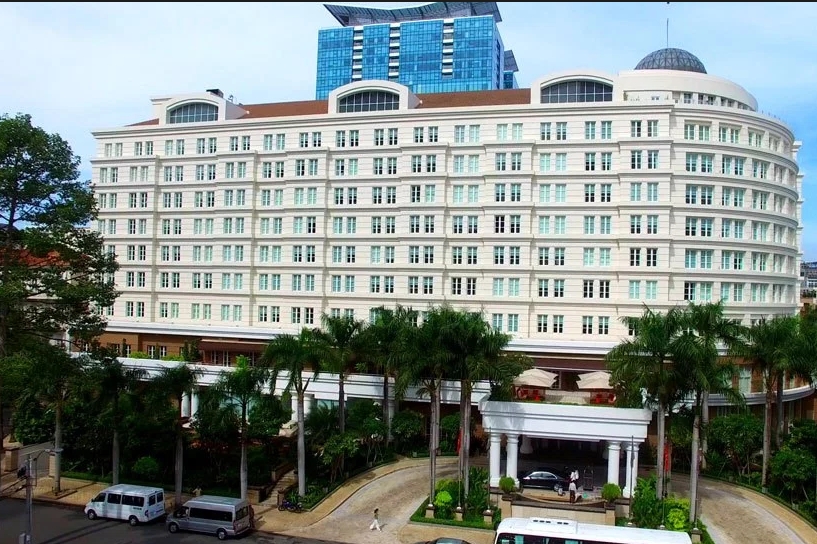

End of day one in Saigon
Day 2 - Last day of our trip
Today we go on two excursions 1) to the Cu Chi Tunnels and 2) to the War Remnants Museum. Both are very interesting.
Cu Chi is maybe 25 kilometers north of Saigon, as the crow flies, but we get there by bus and then by speed boat.
The bus trip takes us past parts of Saigon that we never saw the first day.
A very modern high-rise with the statue of a very ancient man in front. They man is Trần Hưng Đạo and he was the Supreme Commander of Vietnam during the Tran dynasty. During this time the Mongol forces of Kublai Khan invaded not once, not twice but three times and were repelled each time.
Read more about it here.
More modern buildings. Saigon has become a very modern city.
Lots of construction going on.
The Cu Chi Tunnels were originally built and used during the late 1940's during the Vietnamese war against the French. Then during the Vietnamese war against the Yankees in the 60's they were improved and added-to by the by the Vietcong. According to our guide families lived in these tunnels for years on end during the war.
It was explained to us that the proximity of this area to Saigon was what made it such a high-value battle ground.
Here's a good article on it courtesy of LonelyPlanet.com
Being that the tunnels are all underground (as tunnels normally are) there's not that much to see above ground that relates to the tunnels. But there's a bit.
This is a crate made by a 500 pound american bomb. It's tough to judge the scale as there's no body in it but it was a good sized hole in the ground.
Here's a wee video that shows how the Vietcong soldiers would disappear into a tunnel and evade the damn yankees.
The jungle was also full of booby traps to injure or kill the american soldiers. Here's a small pit with a trap door that when stepped on would open and the poor bugger would go down and be impaled by the waiting spilkes. Ouch!
There were many such similar things and if not for the big bald headed fucker that had to be first and in front of everyone I would have got some better pictures.
Here's one that would put some holes in your leg and then make it real painful when they pulled you out.
A bunch more here at Google pics.
What's shown below and the one following is how the Vietcong got fresh air into the tunnels. You can imagine with all the soldiers and babies and old people living in there and farting like water buffaloes that the air would get pretty bad in short order.
What they did was created air intakes that looked like termite mounds. Very clever.
Another one.
This is a US army tank that was destroyed by the Vietcong. I'm sure there are many more in the forest but due to un-exploded bombs and land mines we were not able to leave the path to look for them.
Some artillery.
And some bombs. Huge.
During the trip through the jungle we kept hearing gun shots. Single shots and then machine gun fire. It made it very surreal as I'm sure it was what it sound like (only probably 10 or 100 times more) during the war. It turns out there's a firing range on site and for a few million dong (local currency) you can shoot the guns used in the war. We skipped that part.
Here's a link to some YouTube videos that show the firing range.
And here's a small video of one of our group crawling in the tunnel. I was behind him taking the shot. This particular tunnel has been enlarged to accommodate the larger western bodies.
In the afternoon we have two more stops.
The Reunification Palace and the War Remnants Museum.
I've created links to wikipedia pages above as there is just so much info I can't begin to cover it. There's just so much history involved
The Reunification Palace is also called the Independence Palace. It's where the Vietnam war ended with the fall of Saigon on April 30, 1975.
A North Vietnamese tank entering the palace grounds.

The crew.
It's actually the crew of the 843. I'm sure they look awfully like the crew of the 844.

How it looks today:
There's old 843 - minus the crew of course.
And good old 390!
The conference room.
The dining room.
The War Remnants Museum was originally named Exhibition House for US and Puppet Crimes Then in 1990, the name was changed to Exhibition House for Crimes of War and Aggression
In 1995 the USA resumed diplomatic relations with Vietnam. It is widely understood that Bill Clinton, then the president of the USA, was responsible. Good thing Donald wasn't in charge then as there'd still be fighting.
Just some shots from the museum.
There's plenty more here.
This is how bad guys were dispatched by the Vietnamese back in the day.
So that's it for Saigon.
